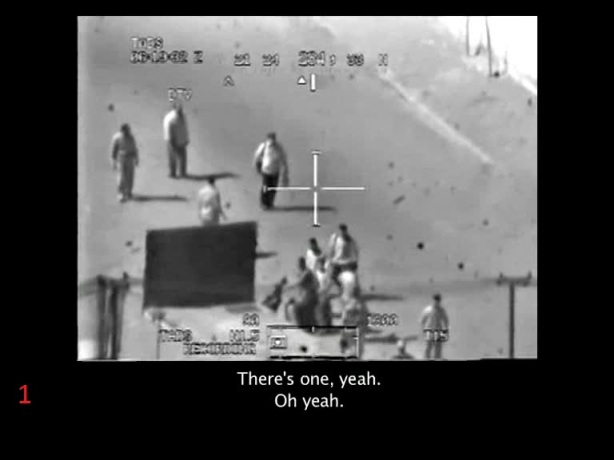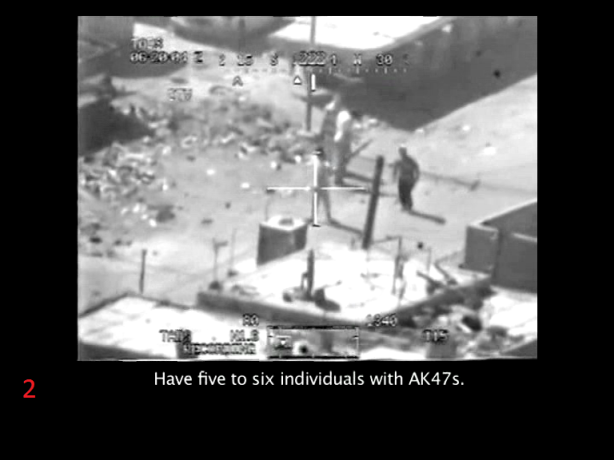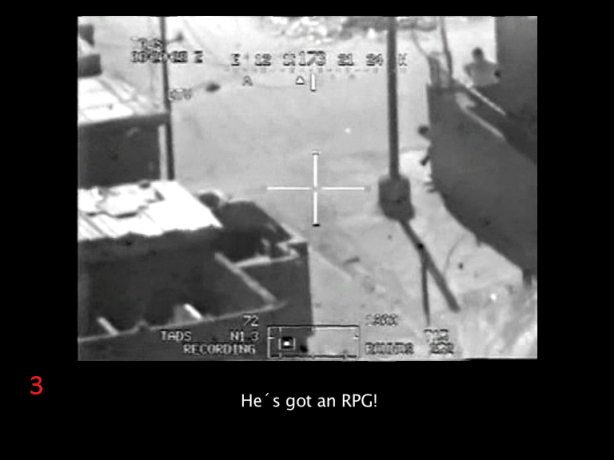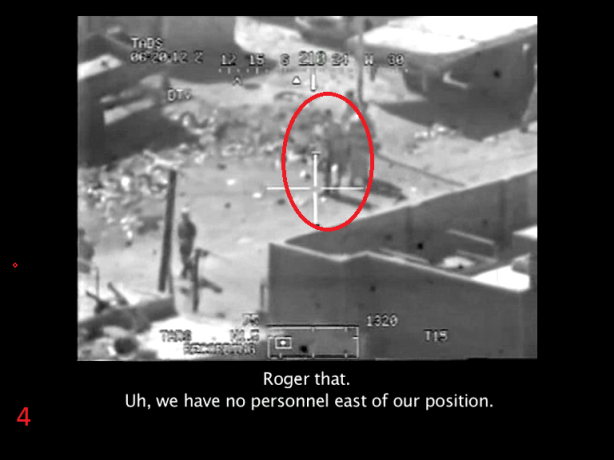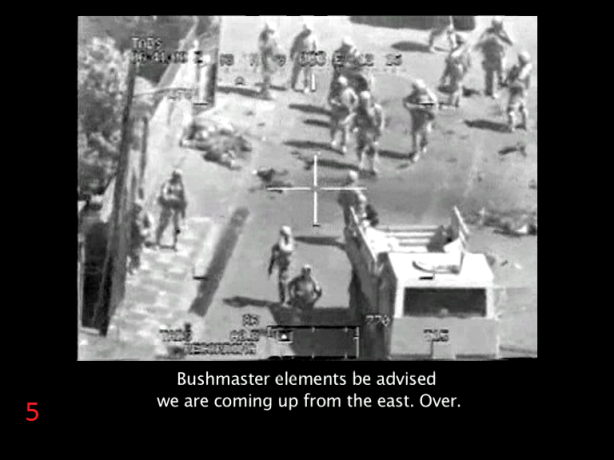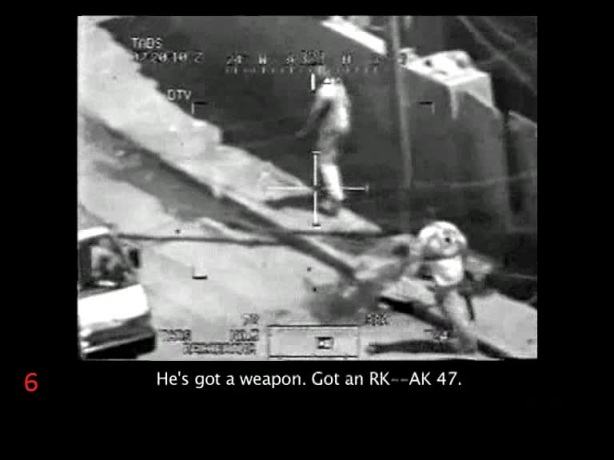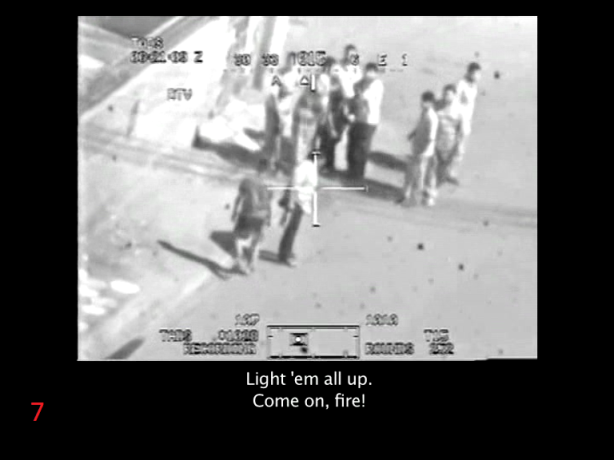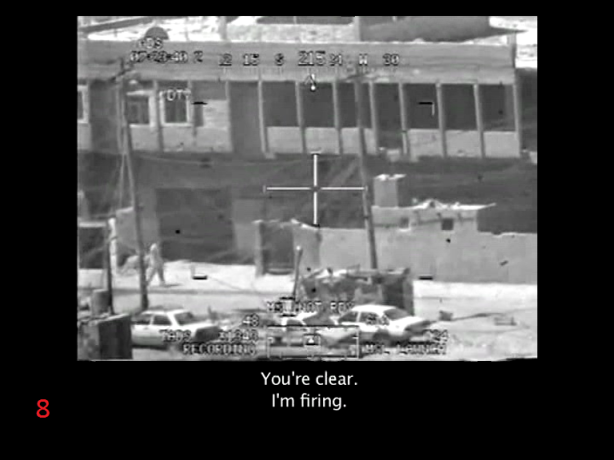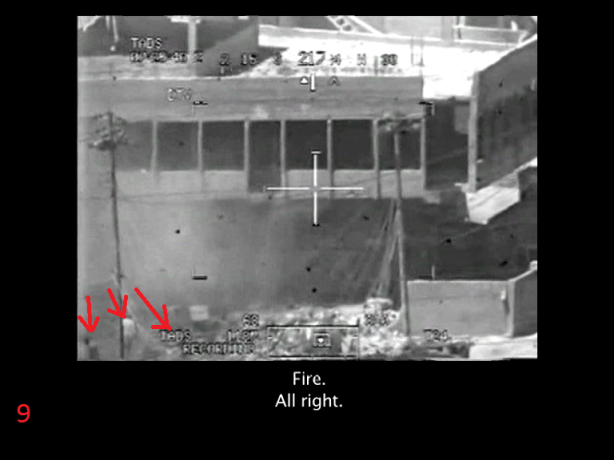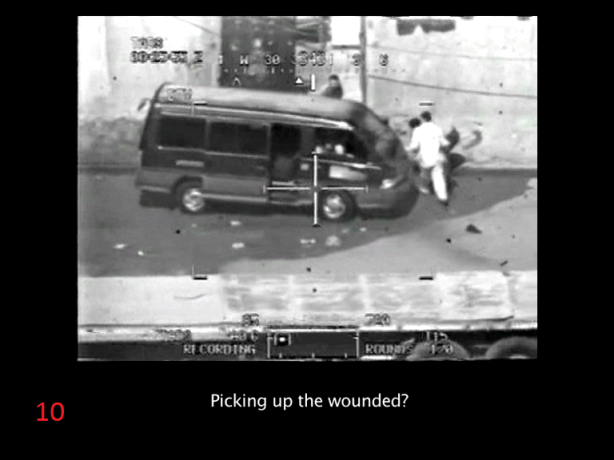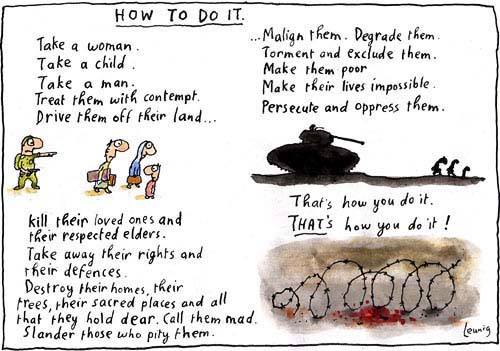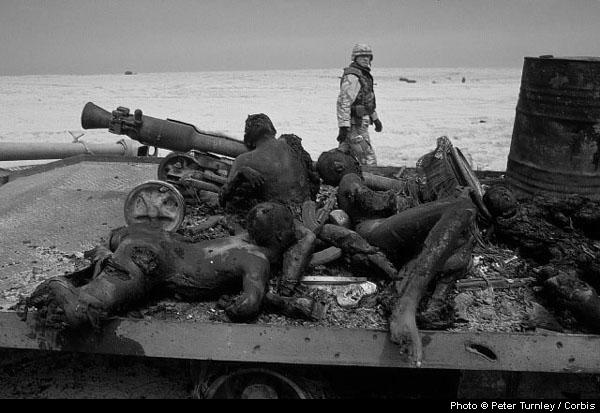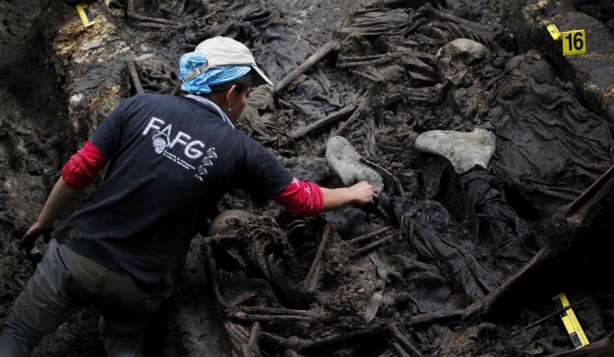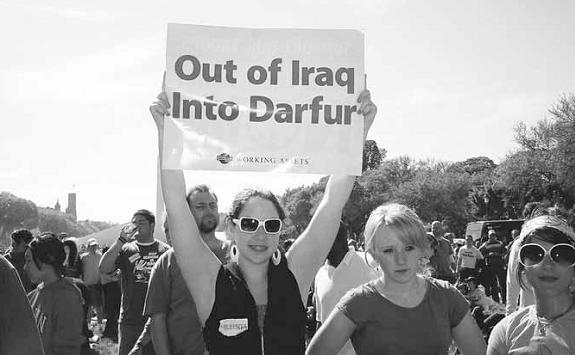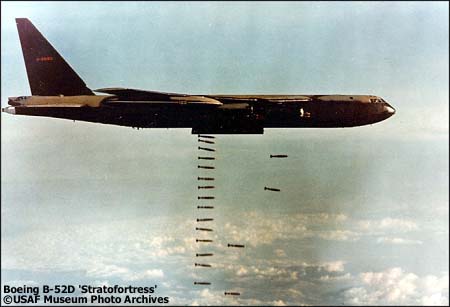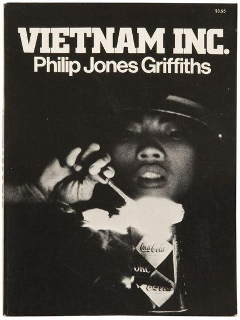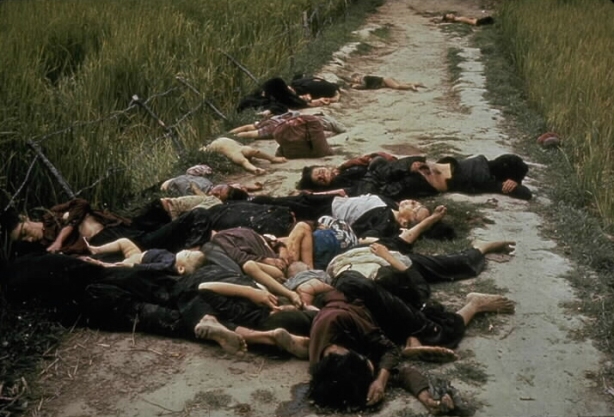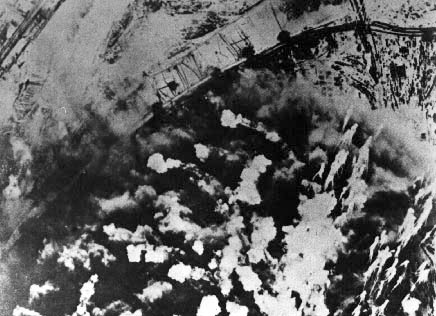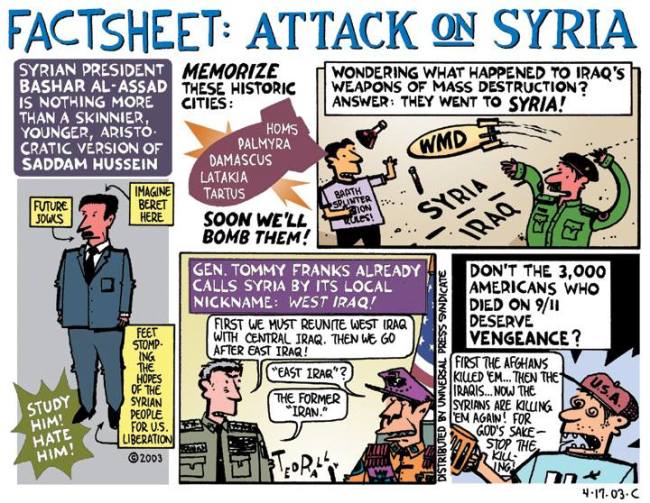
Photograph by Philip Jones Griffiths © Philip Jones Griffiths / Magnum Photos
“…[G]enocide is a new technique of occupation aimed at winning the peace even though the war itself is lost” – Raphaël Lemkin, 1944.
In 2008 I wrote a post-graduate research paper about the “Vietnam War”. I believe I showed quite clearly that Viet Nam lost its war with the United States by any reasonable criteria apart from the most obvious surface events. We are now at the 40th anniversary of the time when North Vietnamese tanks rolled into Saigon. Christian Appy has just published a piece criticising a popular revisionism that misrepresents the events of 40 years ago as an uncontextualised brutal Communist takeover. But what if our misapprehensions go deeper than Appy implies? What if we insist the Viet Nam won the war for ideological reasons and ignore the very compelling evidence that they lost the war, despite their military victory in the field? Drawing heavily on that past work, but giving it a new angle, I will show that the US actually won the “war” because all along their true energies were devoted to visiting destruction on Vietnamese, Cambodians. And Laotians. The word for this behaviour is “genocide”.
Genocide is a concept with an explanatory power that has been ignored and surpressed. It has been misrepresented and it is now generally used simply to indicate extreme condemnation – even more so than the word “terrorism”. Yet it does have a specific meaning, one which provides great insight into the nature of historic events. The problem, if anything, is that it explains things too well, whilst the US is heavily reliant on confusion and obfuscation to escape the moral censure and determined anger it should face for the mass-killings and mass-destruction it has carried out.
US citizens in particular, but Westerners in general, seem to have a gut fear of any suggestion that US actions in Indochina had a coherent rationale. Key beliefs about the fundamental nature of the civilised West and the US in particular are destroyed when we are forced to face the fact that the savage violence that we all must admit was undertaken was in fact part of the project, not an unintended by-blow. Moreover, those who oppose US military violence have been indelibly imprinted with notions of military and political incompetence. As if instinctually, they seem to fear that any suggestion that the US achieved a strategic success would empower the triumphalism of the ‘Murican meatheads they seem to feel surrounded by.
40 years ago the Khmer Rouge occupied Phnom Penh and the Pathet Lao were beginning the last phase of taking control of Laos. On April 30, 1975 tanks from the People’s Army of Viet Nam (PAVN) entered Saigon. It was the end of the Second Indochina War – known in Indochina as the “American War” and known in the US as the “Vietnam War”. The Communists, and some other anti-imperialists who worked under their leadership, had won.
But what sort of victory was this? Throughout the course of fighting the US grew constantly in wealth and strength, while Viet Nam, Cambodia and Laos were weakened in ways they have never recovered from. In relations after the war the US clearly took on the role of victor imposing terms on the defeated. Despite an overblown, if not hysterical, public discourse of defeat and anguish in the US there was never any real question of substantive material damage to the US, nor any possibility that the US Government (USG) would have its actions dictated by Indochinese governments.
The Communist led movements and governments defeated the US militarily, but the shrieks of dismay uttered by US “patriots” and “liberals” alike about their defeat have little to do with reality. In every possible substantive material way the post-War history of Indochina is that of weakened defeated countries that would eventually submit to the hegemony of the US under the neoliberal “Washington Consensus”. What happened?
In this article I will show how much the war waged by the US hurt the countries of Indochina and how this in itself became the basis of a US victory. To understand how this happened we need to put aside some preconceptions and re-appropriate the term “genocide”. When Raphaël Lemkin first coined the term genocide he described it as “a war not merely against states and their armies but against peoples.”[1]
Once I have clarified the distinction between military war and genocide, the nature of US actions will become clear. This is not about a secret conspiracy to commit genocide, US officials overtly rejected military contestation and opted for attacking the peoples of Indochina without feeling the need to conceal a genocidal intent. They openly embraced tactics which caused mass civilian deaths without any embarrassment.
Many contemporary observers commented on the genocidal nature of US mass violence in Indochina. Some used the term “genocide”, some didn’t, but they have all been effaced from the historiography of the Second Indochina War. Apart from a few easily dismissed Leninistic anti-imperial analyses, the orthodox criticism of US policy was created by Washington elites and amounts to little more than a skein of propaganda stitched together by insider gossip and coloured by a sickening lurid coat of racially informed chauvinism and mirror-blindness.
Pyrrhic Victory or Defeat?
On April 30, 1975 PAVN tanks rolled through the streets of Saigon. When Republic of Viet Nam (RVN) leader Duong Van Minh offered to officially relinquish power, tank commander Col. Bui Tin famously responded: “There is no question of your transferring power. Your power has crumbled. You cannot give up what you do not have.” In that respect this was a classic total military victory – the annihilation of the political power of the opponent.
The military theorist Carl von Clausewitz defined tactical victory as possession of the field of battle.[2] Possessing the entire contested territory at the end of hostilities would seem to signal victory in war. But Clausewitz didn’t believe that there was such a thing as strategic victory. He is best known for contending that war was “a continuation of policy by other means” and his wisdom is proven by the case of Indochina. His vision of war was of a limited and circumscribed aspect of violent contestation within a strategic dynamic relationship. Clausewitz knew the military action he theorised about could only ever be part of a greater picture.
It must also be noted that the RVN regime wasn’t the real enemy of the PAVN. It was an entity created, shaped, controlled and sustained by the US – as was Lon Nol’s regime in Cambodia and, to a large extent, the Lao regime under Souvanna Phouma. The Second Indochina War really was the “American War”. The US was the real enemy but the PAVN tanks never rolled into Washington DC; they never broke down the gates of the White House; and however much we might regret it, Bui Tin was never in a position to sneeringly depose Richard Nixon.
Moreover, the progress towards the victory in the field had been horrendously destructive. Each of the Indochinese states, and the people therein, have suffered immensely, whereas the US has no loss that is even remotely comparable. In deaths, for example, the US losses relative to population are less than 0.4 per cent of Cambodian losses (that is excluding the losses after 1975);[3] less than 0.5 per cent of Vietnamese losses;[4] and less than 0.3 per cent of Laotian losses.[5] If we estimate total Indochinese deaths as 4.5 million, of an estimated population of 42 million we get a figure of well over 10 per cent of the population killed, equivalent to 20 million US deaths.
Then there is the economic situation. The US GDP more than doubled in constant dollar terms between 1954 and 1975 and continued strongly afterwards, doubling again by 1997.[6] By contrast, Cambodia didn’t really have an economy by 1975. In fact it had been largely destroyed by the end of 1970, primarily this was caused by a massive influx of US “aid”.[7] By 1973, of less than 7 million Cambodians, an estimated 3,389,000 had been made refugees.[8] The bombing and civil war had reduced the capacity for growing food to such a level that the “sources close to the U.S. government” calculated that if the US government cut all food aid (which they did) 1 million deaths would result.[9] Whatever chances Laos had for development, they were surely crushed by a destructive and divisive war, and Laos remains one of the poorest places on the planet.[10] As for the Vietnamese, the war and subsequent US economic sanctions were devastating. By 1990 the per capita GDP was only $114.[11]
In 1990 Viet Nam began extending economic reforms known as doi moi (renovation). Under doi moi, Viet Nam has achieved much greater formal economic activity (GDP), but only by submitting to the “Washington Consensus”.[12] Among other things this means no price supports for staples such as rice, which in turn means that the real income of the poorest has dropped.
Former US military commander in Viet Nam, Gen. William Westmoreland, characterised doi moi as proof of US victory.[13] He also once said: “We’ll just go on bleeding them until Hanoi wakes up to the fact that they have bled their country to the point of national disaster for generations. They will have to reassess their position.”[14] The one major asset the Vietnamese gained from the war, massive scrap metal resources, was privatised causing government steel mills to stand idle (banned by law from importing scrap) while Viet Nam’s scrap steel was exported at “substantially below world-market values”.[15]
Some perspective on these decades of poverty is given by economists Adam Fforde and Suzanne Paine. Their analysis is that the DRVs “neo-Stalinist” economic approach was highly suitable for a united Viet Nam in the 1950s, but not so for North Viet Nam alone and not, after the destruction of the war and two decades of separate development, suitable for a reunified Viet Nam.[16] In other words the “American War” and the sanctions that followed meant the difference between a relatively prosperous populous nation with a degree of industrialisation, and a dysfunctional underdeveloped economic backwater that was forced to join the international economic order as a provider of cheap labour for the light manufacturing requirements of tax-averse and wage-averse multinationals. The implications are sickening.
In the meantime, the US claimed that it was trying to prevent the rise of the Democratic Republic of Viet Nam (DRV) as a regional military hegemon. But its actions belied those words. I do not have the space and time to detail this but the key points are: 1) The US drove the very reluctant DRV to war; 2) The US was antagonistic to negotiated settlements throughout; 3) Equally the US was extremely antagonistic to neutralism in Laos, RVN and Cambodia; 4) The US was antagonistic to political pluralism in RVN. These factors all far outweigh any efforts by the US to attrit PAVN military strength. The famous bombing campaign “Rolling Thunder”, for example, had the effect of strengthening civilian support for war against the US while increasing DRV dependence on Soviet aid.[17]
In essence the US manufactured the military victory of the North under a monolithic Communist regime – like a self-fulfilling prophecy. I am not saying that Hanoi’s Communist leaders did not themselves work to consolidate power, nor that they would not have eventually seized power after the war. But that is speculation.
Effectively, the US role was to transform the political hegemony enjoyed by the Communists during the First Indochina War, into a military hegemony. This makes perfect sense as a deliberate strategic move. Indeed, throughout the Cold War the US was clearly quite comfortable with poor repressive Communist dictatorships which were dependent on the Soviet Union. In contrast, it hated and crushed regimes that had pluralistic governance that were Communist or Socialist led, or were independently nationalistic and inclusive of left-wing political factions. Of course the US claimed that it was acting against an impending totalitarian takeover, but its actions declare otherwise.
You might still think that this all mean that the Communists won, but that it was a Pyrrhic victory. On paper, Viet Nam won the right to $3.3 billion in reparations payments (diplomatically referred to as reconstruction “aid”) from the US. But the post-War years revealed who was really the victor.
Viet Nam wanted to normalise relations, but they also wanted to get that money. They tried using the issue of cooperation over POW, MIA, and KIA remains repatriation as a negotiating lever, but of course this was just a propaganda gift to the US. They tried to tie normalisation to the payment of the promised “aid”, but the US trade embargo on Viet Nam was hurting them far more than it was hurting the US. Far from paying them money, the US forced Viet Nam to spend huge amounts of its meagre finances on finding remains of US servicemen – an estimated $US1.7 million in per body in 1994 currency. The US lifted its trade sanctions in 1994, once Viet Nam was firmly part of a US dominated system of globalised economic and trade governance.
Impoverished Laos was never placed under sanctions, but Cambodia’s nightmare is also that of a defeated power, not a victor. In April 1975 years ago, with food production devastated and roughly half of the population crowded into Phnom Penh, units of Khmer Rouge began a brutal cleansing, emptying the overcrowded city completely. The forces that occupied the capital were predominantly very young, impressionable, and traumatised. Many were teens who had lived through five years of brutal warfare and who were commanded by an extremist political leadership who were already halfway to the crescendo of paranoid lunacy they would reach by 1978. The country was an unbelievable mess, and the “victors” were deranged ideologues dealing with circumstances which were themselves completely insane.[18]
Even without knowing what atrocities the Khmer Rouge would later commit, does it really seem that they were victorious over the US in 1975? And what about the people of Cambodia? It is important to distinguish between the people and their rulers because the US began secretly supporting the Khmer Rouge at the height of their violence[19] and continued to support them when they fought a guerrilla war against the Viet Nam backed government that had replaced them. Cambodia, like Viet Nam, was thence subject to US sanctions. I think that it is fair to say that although the Khmer Rouge defeated the US on the battlefield, the US soon began supporting them because they were demonstrable enemies of the Cambodian people.
It was the US that destroyed Cambodian neutralism. They claimed to be fighting communism, but their action were to spread communism whilst destroying Cambodia and killing its people to no discernible military end. A Finnish Inquiry Commission designated the years 1969 to 1975 in Cambodia as Phase 1 of the ‘Decade of Genocide’.[20]
Destroying Cambodia
In some respects US actions in Cambodia were the clearest and most successful expression of the model of genocide used in Laos and the RVN. US officials never made any cogent case for their actions in military terms. In a normal politico-military sense, US actions were very predictably counterproductive.
Before US intervention there seemed to be little threat of a communist takeover of Cambodia. The Cambodian Khmer Issarak (insurgents who had strong ties with, but formal independence from the Vietminh) had been unrepresented at the 1954 Geneva Conference and hence, unlike the Pathet Lao and the Vietminh, went unrecognised in the settlement.[21] Most of the Khmer Issarak (over 2000) left Cambodia with Vietnamese anti-colonial forces (Vietminh) who had been operating in Cambodia and based themselves in North Vietnam until their return after 1970.[22]
Although not immediately threatened by armed and trained leftists, Prince Norodom Sihanouk (the head of State from 1955 until 1970) adopted a neutralist position. He could not afford to be enemies with the Vietnamese. Nevertheless, under Sihanouk there was one serious leftist rebellion after his refusal to endorse candidates in the 1966 election closed the doors of electoral struggle to the left wing. The 1967-68 “Samlaut Rebellion” resulted in perhaps 10,000 deaths; greater than those incurred by Cambodians in the First Indochina War against French rule.[23] Although Sihanouk often viciously repressed the left of his own country, any concrete moves against the forces of the DRV or the NLF would have brought about his downfall. The US was, however, less than understanding of the delicate position – at least in its deeds. Although publicly supportive of neutralism, Washington worked hard to destabilise and cripple Cambodia, its actions driving Sihanouk into an ever closer relationship with Hanoi, Beijing and the NLF.[24]
The US “Studies and Operations Group” conducted attacks with US Special Forces personnel in Cambodia throughout the 1960s. In 1967 these were institutionalised as “Salem House” (later known as “Daniel Boone”). This programme was kept secret from the US congress and conducted a total of 1,835 missions. Their primary activity appears to have been the laying of “sanitized self-destruct antipersonnel” mines anywhere up to 30 kilometres beyond the border. Their supposed mission was intelligence gathering, but throughout the whole programme they only captured 24 prisoners.[25] The Special Forces troops usually disguised themselves as PLAF fighters and sometimes attacked civilians in “false-flag” operations.[26]
In 1970 Sihanouk was overthrown by General Lon Nol and Prince Sirik Matak with tacit support from Washington and probable assistance by the CIA. The US had developed ties with Lon Nol in the 1950s and by 1970, according to CIA officer Frank Snepp, he was one of two candidates being groomed by the CIA to take Sihanouk’s place.[27] Washington recognised the new regime within hours.[28] So fast was recognition of Lon Nol’s government that it must have precluded any possibility that the changes on the ground were being assessed, which strongly suggests that the US must have had detailed foreknowledge in order to have any confidence in its judgement.
Sihanouk’s overthrow made civil war unavoidable. Many, including US personnel, thought that part of the reason for overthrowing Sihanouk was the fact that he allowed arms to flow to the PLAF,[29] yet the supply of arms coming from Cambodia to the PLAF was often conducted by pro-US officers,[30] including Lon Nol, and it continued unabated once Sihanouk was overthrown.[31] As I detail below, the US had created a system in Indochina where its own clients were suppliers of arms to its enemies.
In 1969, before the above events, the US began bombing Cambodia in what was known as “Operation Menu”. From Saigon, US General Creighton Abrams insisted that he had “hard evidence” that the Central Office for South Vietnam headquarters (COSVN HQ) had been located in the “Fish Hook” salient of Cambodia.[32] The problem was that no such place ever existed, though for years the US had mounted operations to crush it when they claimed it was located in South Vietnam.[33]
Once under way, Operation Menu spread to other areas. Despite the carpet bombing of area supposed to contain COVSN HQ, in April 1970 Abrams claimed that the headquarters still existed as a fortified underground bunker with 5000 personnel.[34] In May US and RVN forces invaded Cambodia, the action justified in part as an attempt, yet again, to wipe out the COVSN HQ “which had become the Holy Grail of the American war”.[35] The US/RVN invasion simply, and predictably, drove communist forces deeper into Cambodia.[36]
The results of the bombing were those of generating an enemy by killing civilians, a recurrent practice of the US. Ben Kiernan repeatedly cites evidence in numerous consecutive instances that US/RVN aerial bombardment strengthened the Khmer Rouge insurgency, and, more specifically the anti-Vietnamese faction of the Khmer Rouge under Pol Pot.[37] In 1969, the Khmer Rouge consisted of perhaps 4000 – an ultimately unthreatening insurgency. By the end of 1972, they were able, with DRV logistical support, to “hold their own” against Lon Nol’s armed forces, which, at US instigation, had been enlarged to between 132,000 and 176,000 (not counting “ghost” soldiers, who existed only on the books of the corrupt officers who collected their pay) and had massive US/RVN air support.[38] In William Shawcross’s words, “the new war was creating enemies where none previously existed”[39] and by this stage, Lon Nol’s regime was already reduced to the control of shrinking and fragmenting enclaves.[40]
Within a year of Lon Nol’s coup the economy of Cambodia was virtually destroyed, not only by bombing, but also by US aid. Aid was channelled to the import of commodities and surplus US agricultural goods. It also underwrote the Cambodian government and armed forces: “By the end of 1970, the government was spending five times its revenue and earning nothing abroad.”[41] Most of the population became reliant on US aid to eat, and rice supplies were kept at the minimum level needed to prevent food riots. By 1975, malnutrition was widespread and many children starved to death before the Khmer Rouge victory.[42]
Less than two months after the coup that brought Lon Nol to power, the US invaded Cambodia, along with ARVN forces. They did not bother to forewarn Lon Nol who found out after Richard Nixon had announced the invasion publicly.[43] This invasion along US and RVN bombing and the civil war made refugees of nearly half of the Cambodian population.[44] Lon Nol was outraged by the invasion and when later briefed by Alexander Haig (then military assistant to Kissinger) about US intentions he wept with frustration. According to Shawcross, “He wished that the Americans had blocked the communists’ escape route before attacking, instead of spreading them across Cambodia. … The Cambodian leader told Haig that there was no way his small force could stop them. … [Haig] informed Lon Nol that President Nixon intended to limit the involvement of American forces…. They would be withdrawn at the end of June. The the President hoped to introduce a program of restricted military and economic aid. As the implications of Haig’s words for the future of Cambodia became clear to Lon Nol, he began to weep. Cambodia, he said, could never defend itself.”[45]
US actions, particularly in bombing, were directly responsible for creating the communist enemy which overthrew Lon Nol. The bombing between 1969 and 1973 took up to 150,000 lives.[46] If averaged out, over 33 tons of ordnance were used to kill each Khmer Rouge insurgent.[47] Despite the fact that Vietnamese pilots bombed any Cambodian they could, which aided only the Khmer Rouge, Lon Nol acceded to a US demand that he request an increase in VNAF bombing in 1971.[48] By May 1972, the Lon Nol regime had control of perhaps 10 per cent of the country and continued to lose territory which was thereafter fragmented into ever smaller enclaves.[49] The result was by that stage foregone, and yet the war dragged on for three years with the greater part of the 1 million casualties occurring after that point.
In 1970, when Henry Kissinger briefed Jonathan “Fred” Ladd, who was slated to conduct the war in Cambodia, he told him, “Don’t even think of victory; just keep it alive.”[50]
When the US Congress finally blocked aid to Cambodia and South Vietnam, it was with the belated realisation that such aid would not give any hope of victory or improve a bargaining position. Senator Mike Mansfield spoke out, “Ultimately Cambodia cannot survive…. Additional aid means more killing, more fighting. This has got to stop sometime.”[51]
Ooops, we destroyed your country. Our bad :-(
Because the violence in Cambodia was a “sideshow” with little official acknowledgement, US officials did not have complex explanations for their actions. Historians have largely concluded that the US was in the grips of irrationality, but their evidence of irrationality is, in a nutshell, that the US acted in a militarily counter-productive and genocidal manner. They automatically rule out the possibility that US actions were cogent acts of genocide. They build a framework of knowledge by applying that presumption to various historical events and thus generating the historical “evidence” of systemic irrationality and dysfunction among US decision-makers.
Moreover, people like Lyndon Johnson ensured that history recorded how reluctant they were to fight. The reluctance was more apparent than real. Johnson made a very vocal show of having his hand forced. He famously referred to the conflict as that “bitch of a war”.[52] In addition, he called it a “god-awful mess”, and himself as “hooked like a catfish”[53] and “trapped”.[54] He had a habit of thinking out loud with regard to the war, wondering “how he could maintain ‘his posture as a man of peace’” and making it clear that all the options available to him were unpalatable.[55] He would have frequent theatrical outbursts of indignation against hawkish advisers and, on one occasion, the constant changes of regime in the RVN which his own administration engineered.
According to Schulzinger, “The succession of military regimes drove Johnson nearly apoplectic. ‘I don’t want to hear any more of this coup shit,’ he exploded to aides”. Johnson was not the only one to have the audacity to condemn the US brokered coups; Maxwell Taylor, who as US Ambassador to Saigon had first forced a change of Government on the US installed Nguyen Khanh, then had partaken in the destabilisation of Khanh’s second government. When the utterly predictable coup resulted, Taylor is reported to have railed at the coup leaders ‘we Americans [are] tired of coups,’.[56].
The most bizarre Johnson outburst I have come across is an instance where a Major was, for no apparent reason, made to hold a map during a meeting between Johnson and the Joint Chiefs of Satff (JCS), becoming “an easel with ears”. Later he described the event to Christian Appy. First the JCS made some recommendations. “At that moment, Johnson exploded. I almost dropped the map. He just started screaming these obscenities. They were just filthy. It was something like: ‘You goddamn fucking assholes. You’re trying to get me to start World War III with your idiotic bullshit – your ‘military wisdom.’ He insulted each of them individually. ‘You dumb shit. Do you expect me to believe that kind of crap? I’ve got the weight of the Free World on my shoulders and you want me to start World War III?’ He called them shitheads and pompous assholes and used the f-word more freely than a marine in boot camp. He really degraded them and cursed at them. The he went back to a calm voice, as if he’d finished playing his little role….”[57]
Frederik Logevall describes Johnson’s behaviour as a “charade” undertaken because “Johnson wanted history to record that he agonised.”[58] But Johnson was not the only one. Not only was John Kennedy also in the habit of thinking out loud with regard to Indochina, but so was Eisenhower.[59] Kennedy would frequently profess peace whilst in the midst of making arrangements for escalation.[60] This conscious and consecutive manipulation of public and historical perception makes any expression of reluctance at any level of US government or military of extremely dubious evidential value.
Moreover, other US officials – notably Westmoreland, Nixon and Kissinger – were far more forthcoming about their genocidal intents. Noam Chomsky has said this: “On May 27, the New York Times published one of the most incredible sentences I’ve ever seen. They ran an article about the Nixon-Kissinger interchanges. Kissinger fought very hard through the courts to try to prevent it, but the courts permitted it. You read through it, and you see the following statement embedded in it. Nixon at one point informs Kissinger, his right-hand Eichmann, that he wanted bombing of Cambodia. “I want them to hit everything,” he said. And Kissinger loyally transmits the order to the Pentagon to carry out “a massive bombing campaign in Cambodia. Anything that flies on anything that moves.” That is the most explicit call for what we call genocide when other people do it that I’ve ever seen in the historical record.”
These sorts of statements, revealing an intent to target civilians or civilian infrastructure, are commonplace among officials at all sorts of levels. Westmoreland personally encouraged personnel to kill civilians.[61] He also approved the Phoenix programme which, by its inescapable nature, involved the murder of civilians (namely “non-combatants” as defined in international law).[62]
Historians might ignore or minimise statements of genocidal intent that they would never ignore had they come from, say, a Rwandan Hutu leader in 1994. In fact, a great deal of effort has gone into trying to find such statements, but the ICTR has found no clear expressions of genocidal intent until after the genocide was in progress. The way people discuss the 1994 genocide in Rwanda you would think that the inverse was true. But rhetorical pronouncements are actually less significant than orthodox historiography would have you think. What is clear from Indochina, and is also absent in the case of Rwanda, is that there was clearly articulated genocidal policy that was acted upon – as opposed to “stated policy” which is mere rhetoric. There were policies that either overtly evidenced genocidal intent or tacitly evidenced genocidal intent in a manner that was impossible to mistake.
In the next section I will show policies that either seemed designed to deliberately cause mass civilian deaths or made mass civilian deaths inevitable whilst promising little or no military benefit and ultimately being inherently counterproductive. Before I do, however, I want to showcase an overtly genocidal policy known as “graduated response”.
“Graduated response” was not important as a military strategy so much as it was as a public relations strategy. Graduated response was an Orwellian construction – the rationale given was that by bombing North Vietnam the US would force the DRV to negotiate. This was based on three completely specious assertions – the first being that the insurgency in the South was a result of “communist aggression” and therefore controlled by Hanoi; the second is that the US would itself have negotiated in good faith; the third, and most breathtakingly baldfaced, is that the US began small and got bigger, initially only bombing the DRV to show the DRV that they would bomb the DRV.
In 1965 McGeorge Bundy explained graduated response in a memorandum, although “explained” might be too strong a word. Bundy states: “We cannot assert that a policy of sustained reprisal [graduated response] will succeed in changing the course of the contest in Vietnam…. At a minimum it will damp down the charge that we did not do all we could have done….” Bundy also talks of showing “U.S. willingness to employ this new norm in counter-insurgency….” It is worth remembering that this “new norm” in “counter-insurgency” is not interdiction bombing of supply routes, it is strategic bombing of the DRV, guaranteed to bring massive suffering to the civilian population.[63]
The military objected strenuously to graduated response, under the misapprehension or pretense that the given rationale was all true.[64] The military objections existed within a discourse of callous but pragmatic militarists and of concerned but naïve civilians who underestimate Hanoi’s legendary willingness to sacrifice its own people.[65] No doubt, many officials debated earnestly in these racially informed terms, but they were debating the merits of one fiction over the merits of another.
The air war in Indochina bore no resemblance in practice, to that which was espoused in theory. For a start, it could only be applied to the bombing of North Vietnam which was the recipient of less than one sixth of the bombs dropped by the US during the war.[66] Secondly, what actually occurred bore no resemblance to the increasing “slow squeeze” that is central to the story. Admittedly the tempo did increase between the initiation of the bombing campaign “Rolling Thunder” in April 1965 and the end of that year, but this was due to the US committing more and more resources to the air war. Bombing in Laos and South Vietnam increased at a far greater rate than in North Vietnam.[67]
Nor could the bombing campaign against North Vietnam be considered “limited” by any standards other than those of the bombing of Laos and South Vietnam. The campaign ran for 3 years and dropped an average of one 500 pound bomb every 30 seconds. By the end 860,000 tons had been dropped, three times as much as was dropped on Europe, Asia and Africa in World War II.[68] Whatever industrial capabilities that were not destroyed outright had to be decentralised at very high costs to efficiency. Agriculture was also affected and it is estimated that the campaign destroyed 10 to 15 years of economic growth. Three major cities and twelve of twenty-nine provincial capitals had been flattened. According to Robert McNamara’s estimate, at one point in 1967 1000 civilians were being killed each week.[69]
Nor can it truly be claimed that the US sought a negotiated settlement. Lyndon Johnson twice expressed a wish to negotiate, once offering “unconditional talks”, but these offers were not addressed to the DRV regime, but rather to US domestic audiences in speeches.[70] Not surprisingly, Hanoi took these offers with a grain of salt, when they heard of them, and released a list of its aims, presumably hoping that the US would respond by saying that none of the DRV’s desires were negotiable.[71] Instead the US government held up the list of points as proof that Hanoi did not want to negotiate, and when Hanoi tried to clarify that it was in fact willing to negotiate, it was ignored by the US government and media. In fact Hanoi had made several moves to try an institute negotiations which the State Department and even the hawkish Ray Cline (at the time, acting Director of Central Intelligence) agreed were probably real.[72]
Because the US was not actually willing to negotiate, “graduated response” is not really a strategy, and provides no actual rationale for US behaviour. By claiming to seek negotiations which the US would not itself allow, the US could continue bombing without any military strategic rationale, without having to give a reason. To maintain the illusion the Johnson administration would periodically cease bombing before any planned escalation. James William Gibson writes that the, “sense in which the [bombing] pause was for political appearances only can be discerned in most memoranda.”[73]
The really striking thing about “graduated response”, though, is that there was no real pretense that the bombing was designed to degrade military capabilities to improve military outcomes in the field. If the point was to drive the DRV to negotiate by “reprisal” then it is obvious that this is not a military exercise at all. The inevitable non-combatant casualties and damage to civilian infrastructure and property is no longer “collateral damage” in an attack on military targets, it is part of the intentional target. So even if the US had been trying to force the DRV to negotiate, there were using genocidal means to do so and they showed genocidal intent. It is a very clear breach of the United Nations Convention on the Prevention and Punishment of the Crime of Genocide (UNCG) which prohibits the intentional destruction “in whole or in part” of a “national, ethnical, racial or religious group”.
Mass Murder in Viet Nam
There is no denying that the US visited systematic destruction on Laos, Viet Nam, and Cambodia. Those who deny the genocides usually do so on the grounds that the US did not have a genocidal intent. As I showed, the policy of graduated response shows that genocidal intent existed. But even genocide scholars often seem to think that “genocidal intent” only exists when that genocidal intent is itself a motive. This is the equivalent of saying that if I kill you in order to steal your watch I am not guilty of murder because I am was just using deadly means incidentally, as a means of acquiring your watch.
Genocide scholars are by no means above splitting hairs over intentionality in order to keep Western atrocities free of the stain of being labelled genocide. They largely reject even-handed simplicity. A straight-forward approach would inevitably force them to take intellectual stances that are politically uncomfortable with regard to settler-colonial history, US foreign policy, globalisation and neoliberalism, and, last but not least, Israel. Instead of maintaining clarity, these scholars tie themselves in knots of obfuscation, and in doing so they add more and more elements of unnecessary subjectivity to increasingly unreal and ornate theoretical constructs. They do so whilst complaining that the subject itself is too taxing and slippery for even the greatest of minds.
Mark Levene, to pick one example, described Spanish acts towards indigenous people at Potosí as “the wholesale destruction of their political structures and autonomous power so that, suitably subjugated, their populations could be put to enforced work, in effect enslaved, in order to enrich their new Castilian masters.”[74] According to Levene, this is merely “hyper-exploitation” because it lacks exterminatory intent. He writes, “this was not a policy or strategy geared towards killing the natives or their replacements outright but extracting as much labor out of them as possible….”[75] This statement is quite simply wrong. These people were intentionally worked to death just like millions Jews, Slavs and Roma were worked to death by the Germans. There is no recognition given by Levene that up to 8 million people in Hispaniola were completely exterminated by the same empire using the same institutions,[76] even though he acknowledges their extinction as a result of contact with Europeans. Instead he merely writes, “There are conditions in which extermination may also emerge out of hyper-exploitation, most obviously when native peoples revolt against their oppressors, leading to the latter’s retributive over-kill.”[77]
Levene is formulating a typical expression of Western exceptionalist doublethink. He acknowledges acts of near inconceivable savagery, but then creates an interpretation which suggests that this savagery is only the accidental by-product of a far more essential Western rationality. This is nothing but conventional self-replicating racism. Levene automatically seeks evidence of rational self-interest on the part of Western actors, which then over-rides any evidence of racial animus and appetitive savagery. Conversely, when dealing with non-Western actors he seeks evidence of animus which then effaces issues of rational self-interest.
The irony is that Levene does an excellent job elsewhere of analysing the Revolutionary French genocide against the people of the Vendée when there was a counter-revolutionary insurgency. Therein he balances the passionate brutality and the cold calculations of a bureaucratic machinery of mass-murder. I assume that for someone like Levene it is somewhat easier to see savagery as a symptomatic part of Western culture if it is a revolutionary savagery. The funny thing is that historians of the period who are not familiar with the concept of genocide accuse him of imputing a genocidal motive because they can’t distinguish between intent and motive. I would laugh, if I wasn’t so busy raging ineffectually from the margins.
I have shown that in one policy, the US demonstrated genocidal intent towards Viet Nam, or at least the northern part of it. But one of the things that made the concept of genocide so brilliant from the first was that Lemkin always understood that genocide would, by nature, be expressed in many different ways. John Docker describes Lemkin’s conception as being “composite and manifold… a coordinated plan of different actions aiming at the destruction of the essential foundations of life of a group.”[78]
The genocide in South Viet Nam was more intense than anywhere else in Indochina, but also more complex and confusing. Much was similar to the situation in Cambodia. People were driven from the countryside to be concentrated in urban slums, a process Samuel Huntington described as “refugee generation”.[79] The RVN was also made economically dysfunctional by US “aid”. The result was a partly surreal country of militarism, consumerism, grief, poverty and degraded anomie. This was the society documented by Philip Jones Griffiths in his book-length photo-essay Vietnam Inc. which showed maimed civilians, beggars, drugs, and child soldiers. It showed that the war permeated everything. It was a world populated by a lost people ripped out of normality and placed in a new landscape strewn with alien protrusions of war machinery, billboards, craters, corpses and girly bars. Griffiths explicitly contextualised it all as a twisted form of business enterprise.[80] He later told Christian Appy, “The closer you got to the war… the more you objected to what you saw. Eventually I believed that what America was doing in Vietnam was genocide.”[81]
 Called “Little Tiger,” rumored to have killed two “Vietcong women cadre”—his mother and teacher. Vietnam, 1968. Photograph by Philip Jones Griffiths © Philip Jones Griffiths / Magnum Photos
Called “Little Tiger,” rumored to have killed two “Vietcong women cadre”—his mother and teacher. Vietnam, 1968. Photograph by Philip Jones Griffiths © Philip Jones Griffiths / Magnum Photos
Here are some quotes from Lemkin that are apposite:
- “The destruction of the foundations of the economic existence of a national group necessarily brings about a crippling of its development, even a retrogression. The lowering of the standards of living creates difficulties in fulfilling cultural-spiritual requirements. Furthermore, a daily fight literally for bread and for physical survival may handicap thinking in both general and national terms.”[82]
- “In order to weaken the spiritual resistance of the national group, the occupant attempts to create an atmosphere of moral debasement within this group. According to this plan, the mental energy of the group should be concentrated upon base instincts and should be diverted from moral and national thinking. It is important for the realization of such a plan that the desire for cheap individual pleasure be substituted for the desire for collective feelings and ideals based upon a higher morality. Therefore, the occupant made an effort in Poland to impose upon the Poles pornographic publications and movies. The consumption of alcohol was encouraged, for while food prices have soared, the Germans have kept down the price of alcohol, and the peasants are compelled by the authorities to take spirits in pay agricultural produce. The curfew law, enforced very strictly against Poles is relaxed if they can show the authorities a ticket to one of the gambling houses which the Germans have allowed to come into existence.”[83]
- “Their general plan was to win the peace though the war be lost, and that goal could have been achieved through successfully changing the political and demographic interrelationships in Europe in favor of Germany. The population not destroyed was to be integrated in the German cultural, political and economic pattern.”[84]
It might surprise people that Lemkin put so much emphasis on cultural, economic, political, social and moral destruction. He didn’t actually devote any more time to the physical destruction of group members than he did to the seven other “techniques of genocide”. When he first described genocide even his account physical destruction was not particularly focussed on killing. He was more detailed about the way in which differential access to food was being used to increase mortality rates. Nevertheless, our common understanding quite naturally leads us to link genocide with mass killings of civilians. Even today there is a degree of interest and attention paid to the intimate acts of murder and massacre that US personnel undertook. In 2003 Michael Sallah started reporting based on atrocities uncovered but kept quiet by the US Army Criminal Investigation Command (CIC). In 2006, with Mitch Weiss, he published Tiger Force, in which the eponymous elite military unit were revealed to have prolifically tortured, raped, murdered and mutilated.[85] In 2007 a German book was published by Bernd Greiner which drew heavily on the files of the Vietnam War Crimes Working Group (VWCWG) to document how US actions became “a war against civilians”. An English translation was published in 2010.[86] The VWCWG was formed in response to the My Lai massacre. It was intended to ensure that the US military was never again caught unprepared by revelations of atrocities. Like the CIC it uncovered many atrocities, documented them and buried them again. Since 2004 most of their files have effectively been blocked from public access.[87] In 2005 Nick Turse published a doctoral dissertation based on VWCWG documents.[88] This led to a series of articles in the LA Times with Deborah Nelson, which formed the basis of The War Behind Me in 2008.[89] Last, but by no means least, came Turse’s book Kill Anything that Moves in 2013.[90]
Collectively these works reveal a horrifying pattern of war crimes – brutal intimate crimes of personal savagery. They add immeasurably to the often derided testimonies of dissident GIs and veterans who tried to tell people what was happening. But this emphasis on massacre at close quarters threatens to overshadow the greater picture of civilian deaths. Most US personnel did not personally kill civilians and most civilians who were killed by US personnel died without their killers ever being close enough to see the terror and pain on their faces. These acts were part of a larger picture of killing.
Bernd Greiner deliberately chooses to isolate acts of violence in “close proximity” from violence at an “anonymous distance”.[91] Instead of placing the situationally generated personal violence within the context of other systematic acts of mass murder, he contextualises the violence by regurgitating the orthodox scholarship that contends that everything the US did was the result of miscalculating, maladaptation and dysfunction. He even repeats the irrational, but common, contention that “assymetrical warfare” makes material superiority “more of a curse” than a blessing.[92] Like Levene he is artificially separating the intimate brutal mass-murder from the calculated dispassioned policies of mass-murder in order to explain each and abberations in terms which, without the artificial cognitive distance, would readily be revealed to be contradictory.
The real story is only understood by seeing how the distant mass murder and the intimate mass murder both fit within the context of “composite and manifold” acts of destruction of which they are only a part.
At one point Turse and Nelson travelled to part of Quang Nam province to find the site of a massacre detailed in US investigation files. They had an uncertain location. In three days of looking for the site they were shown a total of 5 massacre sites where a total of 8 different massacres had occurred, 5 committed by US personnel. They were unable to find the site of the massacre: “we thought we’d be looking for a needle in a haystack of hamlets, not a haystack of massacres.”[93] The factors which lead to such widespread mass murder were not cultural but rather systemic results of deliberate choices. US personnel were primed through indoctrination and then situated in such a manner as to generate a predisposition towards atrocities. US personnel were placed in what Robert Jay Lifton has referred to as “atrocity-producing-situations”. The problem is that even after 40 years of consistently creating these “atrocity producing situations” even Lifton himself will not entertain the notion that the atrocities are an intended result.
I will begin, then, by printing the testimony of S. Brian Willson. He was one of very few people who was forced to confront intimately the results of an airstrike on a village. The Vietnamese farmers had extraodinarily strong ties to their land and practiced a Confucian reverence for the shrines of ancestors. So, predictably, when a free-fire zone was declared many would remain behind, sleeping in bunkers and often living with the nightmare of nightly shelling. Those people faced the further risk of aerial bombardment. S. Brian Willson was assigned to guard Bin Tui, an airbase in South Vietnam, in which position he was given the duty of helping assess bombing missions, in April 1969, to ensure that pilots were not deliberately missing their targets. His description of the first such mission includes, “…a sea of bodies. Probably 100 to 120 corpses. A few of them were moving, most were still. This was 15 minutes after the bombing.” The village had been bombed in the middle of the day, when the healthy adults were at work in the fields, so the victims were all the children, the elderly, the infirm and childminders. The military situation was such that just two officers were able to arrive 15 minutes after the bombing without any endangerment to themselves. Willson’s companion, an VNAF Lieutenant replied to Willson’s protestations: “They’re communists, this is a victory,” and they left the wounded to die. Willson believed there was some mistake, but soon discovered that, because the entire province had been declared a free-fire zone, the villages were systematically being destroyed without reference to whether or not there was intelligence of enemy activity. Willson described this as “a deliberate systematic plan to wipe out the civilian population.”[94] In a written account of the same event, Willson adds, “At one dramatic moment I encountered at close range a young wounded woman lying on the ground clutching three young disfigured children. I stared, aghast, at the woman’s open eyes. Upon closer examination, I discovered that she, and what I presumed were her children, all were dead, but napalm had melted much of the woman’s facial skin, including her eyelids.”[95]
Free-fire zones unavoidably make a mockery of Greiner’s attempt to keep intimate and distant violent separate. In South Vietnam the number and extent of free-fire zones kept expanding. By the beginning of 1967, according to Neil Sheehan: “Free-fire zones proliferated so rapidly with new red lines on maps for laying waste that it was no longer possible to keep track of their number and the total area they encompassed.”[96]
The spread of free-fire zones was only made possible by the fact that US armed forces did not actually occupy or “pacify” rural South Vietnam, a circumstance which will be examined below. By 1969 they encompassed 75% of South Vietnam.[97] Though the Rules of Engagement (ROE) officially specified otherwise, examples abound of the military authorities encouraging troops to consider all persons in a free-fire zone to be a legitimate target. Weiss and Sallah detail multiple instances where it is clear that Tiger Force had been led to believe that “free-fire” meant that they had complete discretion and could legitimately kill whoever they wanted.[98] Eventually the Orwellian logic predominated to such an extent that Westmoreland, in 1969, was able to baldly claim that absolutely no civilians had ever been killed by the US in designated free-fire zones, because no-one in a free-fire zone was a civilian, by definition.[99]
This had been building for a long time. For many years the US had used militarily counterproductive tactics which systematically killed civilians and were a major impetus in fuelling the armed insurrection against the US-installed regime in Saigon. As early as 1962, with the war continually gaining momentum, US Colonel John Paul Vann observed an ARVN tactic of randomly shelling and bombing civilian structures which “kills many, many more civilians than it ever does VC and as a result makes new VC.”[100] When he and Colonel Daniel Boone Porter confronted Westmoreland’s predecessor, General Paul Harkins, with an appeal “to stop this self-defeating slaughter”, in Neil Sheehan’s words, “he turned out to be as dense in his own way as the Saigon commanders. Instead of using his influence to put a halt to the bombardments he was furthering them.”[101]
It should be noted here that with respect to major military policies, doctrines and significant recurrent tactics, the ARVN followed the dictates of the US military. The US exercised veto power over their allies actions because they were so essential a point of supply. As Roger Warner observed this gives the US complete power over the strategy of dependents like the Hmong forces in Laos.[102] In 1969 ARVN General Cao Van Vien said: “We Vietnamese have no military doctrine because the command of all operations in Vietnam is in the hands, is the responsibility, of the American side. We followed the American military doctrine.”[103] The fact is that the US simply dictated to the various RVN regimes what numbers and what kinds of forces it desired,[104] and when a regime was insufficiently compliant it was overthrown.
As it happened, despite further years of experience which confirmed Vann’s prognosis that randomly killing civilians would increase the numbers of the NLF, the US armed forces and those of their allies employed a virtually identical method of employing artillery, which they termed Harassment and Interdiction (H&I) fire. This was unobserved artillery fire, usually employed every night on places such as cross-roads in designated free-fire zones. It was not until the US had been doing this for 3 more years that General Creighton Abrams (who replaced William Westmoreland) urged his commanders to reduce the amount of H&I fire.[105]
In fact, the H&I tactic was only one way in which the US either directly or indirectly assured that civilians would be injured or killed by US ordnance. The most obvious being the free-fire zones. These were essentially identical, in terms of logic, to the way the Saigon commanders had justified their “butchery and sadism” to John Paul Vann in 1962, by the assertion that geographical location was proof of sympathies, and sympathy with the “Viet Cong” made for a legitimate target.[106] Before the term free-fire zone was invented, the phrase used was “solid VC areas” and by 1963 some US personnel had adopted the logic behind the characterisation: the USAF 362nd Squadron began shooting civilians for sport in these “de facto free-fire zones”.[107]
The way free-fire zones worked was through the way actions were allowed under the US armed forces ROE. US troops on the ground were still bound, in theory at least, to respect civilian life, but any person who ran, regardless of age, was a “VC”, and hence was to be killed. Philip Caputo, a USMC Lieutenant who was later to become a reporter and antiwar activist, asked the obvious question at the time: “Why should the act of running identify someone as a communist?”[108] Note that he is not questioning the rightness of killing someone unarmed because they had a particular political orientation. Turse finds the “purest expression” of the ROE logic on a death certificate which lists external cause of death as “Running from U.S. forces.”[109]
For those operating machine-guns in helicopters or boats, and for those able to strafe with aeroplanes, this rule became a license for mass-murder among those who wished to commit such an act. Gibson gives the example of testimony by a helicopter gunner:
“We had another rule, the use of evasive action. Anyone taking evasive action could be fired upon. Evasive action was never explained to me. It normally entailed someone running or trying to evade a helicopter or any fire.
“My unit, the gunships in my unit had installed MP sirens. Police sirens on the helicopter and we used these for psychological effect, to intimidate people.
“There is one incident I recall where we new over a large rice paddy, and there were some people working in the rice paddy, maybe a dozen or fifteen individuals, and we passed over their heads and they didn’t take any action, they were obviously nervous, but they didn’t try to hide or anything. So we then hovered a few feet off the ground among them with the two helicopters, turned on the police sirens and when they heard the Police sirens, they started to disperse and we opened up on them and just shot them all down.”
Gibson gives another such example before concluding: “United States forces thus consciously created conditions specified by rules of engagement to open fire and produce a body count.”[110] It would not take a lot of such behaviour before, predictably, the Vietnamese would run as soon as they saw a US helicopter or boat. Herman and Chomskly quote the “pro-Western” Japanese journalist Katsuichi Honda who described machine-gunners “firing away at random at farmhouses” and “using farmers for targets as if in a hunting mood”.[111]
In terms of the scale of suffering and death the actions of machine-gunners are nearly insignificant when compared with the consequences of aerial bombardment. For both air and ground artillery purposes anyone within a free-fire zone was a legitimate target. When a new free-fire zone was declared, leaflets were dropped on the villagers instructing them to assemble at certain points to be taken away by helicopter to a new life, generally in a camp or as a refugee. What followed the leaflet drop was known as the “mad minutes” because after as little as an hour had elapsed since the leaflets were dropped, the US would begin artillery bombardment.[112]
Another institution which promoted the killing of civilians was the body count. As Joanna Bourke said: “The ‘body count’ of the Vietnam War formalized psychological processes of dehumanisation….”[113] It should be said at the outset that “body counts” and “kill ratios” are not some logical outcome of an attrition policy. Attrition is about destroying an enemy’s forces and given the situation in South Vietnam[114] it would have made far more sense to emphasise achieving this by the capture or destruction of weapons and supplies. The body count in Vietnam was not just about facilitating violence against enemy combatants, it also created an incentive and inclination to kill civilians. Marilyn Young concluded that “logic seemed to have no end short of the progressive elimination of the population of the South.”[115]
The practice of counting civilian dead as the enemy was known as the “mere gook rule”, and was the direct result of “pressure from on high for ever larger body counts”.[116] Jonathan Neale summarises the logic: “In effect, the American plan was to kill the Vietnamese until they gave up. The pressure for this was relentless. The Pentagon demanded statistics. In some rear unit’s the officers chalked the cumulative kills on a board. Officers knew their careers would depend on their numbers. And although the officers seldom said, ‘Kill all the civilians you can,’ they seldom criticized anybody for doing that, and often praised them.”[117] According to Gibson: “Producing a high body count was crucial for promotion in the officer corps. Many high-level officers established ‘production quotas’ for their units, and systems of ‘debit’ and ‘credit’ to calculate exactly how efficiently subordinate units and middle-management personnel performed.”[118] There were often rewards for kills as a former GI recalls: “There was a real incentivizing of death and it just fucked with our value system. In our unit guys who got confirmed kills would get a three-day in-country R and R.”[119] Perhaps more significantly, a failure to meet a “production quota” could sometimes mean being returned immediately to dangerous duty.[120]
A further institution which promoted the killing of civilians was the “search and destroy” mission. The search and destroy mission is mainly notable as an inherent part of of the ‘Fire-power/Attrition’ strategy, but such things are all inter-connected. The significance of search and destroy missions in terms of killing civilians is very well summed up by Michael Bernhardt, who was present at the My Lai massacre: “I think something like My Lai probably had happened many times before. It was just a matter of scale. Here’s the thing. The whole war effort was built on three pillars-the free-fire zone, the search-and-destroy mission, and the body count. The free-fire zone means shoot anybody that moves. The search-and-destroy mission is just another way to shoot anything that moves. I call it the portable free-fire zone – you tote it around anywhere you go. And the body count is the tool for measuring the success or failure of whatever you’re doing. When you’ve got those three things it doesn’t take a genius to figure out how it’s going to end up.”[121]
These circumstances, along with the abovementioned institutions, created a situational predisposition to kill civilians which might be strongly at odds with the actual values of the individual serviceman. Gibson insists that “atrocities against Vietnamese routinely resulted from the production logic in which the war was conceptualized and fought.”[122]
A very significant circumstance was the endemic racial animus amongst US troops, usually against East Asians as a whole. In training US military personnel were taught to hate their enemy in explicitly racial terms such as “gook”, “slope”, “dink”, “gooner” and “zipperhead”. These terms did not, of course, distinguish combatant status, nor political affiliation, nor even nationality and ethnicity. The result was that even Asian American’s were in danger of being shot because in the belief that they were Vietnamese (one was advised to dye his hair blond and whistle dixie when it got dark).[123] Many, if not most, combat troops came to see all Vietnamese as the enemy, but ironically there was considerable respect for their actual armed opponents, the PLAF and PAVN.[124] Contempt and hatred was particularly extended to their allies: “Many [US Troops] now regarded the ARVN, indeed all Vietnamese, with open contempt. At the same time they came to think of the VC/PAVN as a resourceful and able foe.”[125]
Adding to this was the sense of fear that derived from sense of being universally hated and the hysteria generated therefrom. eale, before detailing the common ways in which US troops would commit serious acts of violence against children for sport, writes: “The old soldiers told the new soldiers the truth [sic]: those children hate us. They know where the mines are. They want us to die.” Having established this “truth” Neale goes on to detail the common practice of throwing full cans of c-rations at childrens heads to split them open.[126] Other such “truths” about the local population would spread amonst the troops, including the belief that Vietnamese children sold poisoned Coke,[127] that the Vietnamese would rig their own babies with explosives to kill GIs, and that prostitutes would boobytrap their vaginas with broken glass.[128]
These rumours are symptomatic of a larger sense of panic and insecurity, and their infantile nature should not distract from the deadly seriousness of the mental condition of the US troops. Former medic George Evans describes the circumstances under which two young boys had died: “I found out they’d been hit by an American military truck and that there was this kind of game going on in which, supposedly, guys were driving through town gambling over who could hit a kid. They had some disgusting name for it, something like ‘gook hockey’.”[129]
Such behaviours are both a result and a cause of an alienation, a massive gulf between Vietnamese and US servicemen, but one of the greatest reasons for that separation lay in the US policy of 1 year tours of duty. As a former ARVN interpreter explains: “The GIs didn’t understand anything at all about Vietnam. They always talked about being here for just one year. Look at their calendars- XXX every day. Everywhere GIs lived they had their calendars, marking off every day, counting the days. By the time they had some understanding, it was time to leave.”[130] The whole culture of the US personnel was one in which Vietnam was not even real, while the US was the “World”.
Just as soldiers of other nations have been, US military personnel were desensitised to violence, fear, pain, and death as part of their formal training. A sample of boot camp experiences is given by Gibson:
“We were told that “the only good gook is a dead gook, and the more gooks you kill, the more slant-eyes you can kill in Vietnam, that is the less you will have to worry about them killing you at night.”
“Now in this training they referred to the Vietnamese as dinks or gooks. The impression was that they were something less than human. I had a drill sergeant in AIT [Advanced Infantry Training] reply to a question, ‘What is it like over there?’; and he told us, he said, ‘It is like hunting rabbits and squirrels.’
“…the main word was, ‘Kill. Kill. Kill.’ all the time, they then pushed it into your head twenty-four hours a day. Even before you sat down to eat your meals, you had to stand up and scream ‘Kill’ before you could sit down and eat.”[131]
Gibson also prints some of the chants used in drill, such as: “VC, VC, kill, kill, kill. Gotta kill, gotta kill, ’cause it’s fun, ’cause it’s fun.”[132] Obviously desensitisation not only facilitates the killing of the enemy, but it is a blunt instrument which also promotes killing per se. One of the most famous of all boot camp cadences from the Vietnam era had the refrain: “Napalm sticks to kids!” Perhaps this particular desensitising phrase was relevant to the conditions that the personnel were about to face, but it has nothing whatsoever to do with combat and the ability to perform the role of a soldier.
It is also a departure from normal military practice to induce unreasonable fear in the soldiers being trained. One former air hostess described the men en route to Vietnam: “These were boys destined for combat and they had been told in training what their expected mortality rate was. I remember an air force Blue Beret actually told me they were trained to die. He didn’t expect ever to go home.”[133] Actually, US casualties were extremely light in the Second Indochina War with less than 2% of those who served in or over Indochina being killed. Naturally the burden was not even and some faced a much higher risk. Nevertheless, in comparison with the odds faced, even by their own countrymen and women, in World War II, these were not in themselves figures which should have induced despondency.
Nevertheless, the sense of peril permeated everything. William Calley, who massacred civilians at My Lai, had this to say about his training: “It was drummed into us, ‘Be sharp! On guard! As soon as you think these people won’t kill you, ZAP! In combat you haven’t friends! You have enemies!’ Over and over at OCS we heard this, and I told myself, I’ll act as if I’m never secure. As if everyone in Vietnam would do me in. As if everyone’s bad.”[134]
The fear felt by US troops was increased by the failure or outright refusal of their commanders to create securely policed occupied territory. Instead massive base camps were constructed which were like small cities, such as one Long Binh which “boasted movie theaters, slot machines, steam baths, restaurant complexes, lawns and flower beds….”[135] This was another factor which kept the US personnel segregated from the local population (except in I Corps where the Marines referred to their compatriots as ‘ice-cream soldiers’),[136] and created a situation where there were highly Americanised islands of safety in a sea of Vietanmese hostility and danger.
Another effect of US tactics at this time was that when on patrol or Search and Destroy missions, ground forces were essentially being used as bait. They would walk until making “contact” (which the US’s own figures indicate was almost always a case of coming under fire from the enemy) and then radio in air and ground artillery strikes.[137] Actually, this manner of emphasising fire-power may have been an effective way of minimising US casualties,[138] but it led to a strong sense of spatial insecurity. Spencer Tucker wrote: “The dominant idea was to locate its enemy using infantry as a reconnaissance force and then destroy him with artillery and air power. Notoriously wasteful of matériel resources, this indiscriminate method meant that innocent civilians often got caught in the crossfire. It also lead to ‘firebase psychosis’ whereby US commanders grew reluctant to commit troops beyond the range of firebase support.”[139] All of this, for the actual ground troops, must have created a complete sense of demoralising powerlessness.
There was also a sense of futility generated. The author Tim O’Brien told Christian Appy: “It was just a blur of going from village to village through paddies with no sense of destination, or mission, or purpose. You’d just wake up and go to a village, search it, and leave. Somebody might die or not, and you’d come back a month later to the same damn village and do it again. It was like going in circles and not really achieving anything. You weren’t winning hearts and minds and you weren’t winning ground. You didn’t know who to shoot unless they were shooting at you. The enemy seemed to be everywhere and nowhere.”[140] The result was that, in one former infantryman’s words, “…slowly as fear mounted frustration and rode down a crippled confidence, as callousness started taking over from condescension in our attitude to the Vietnamese, our vision blurred, clouded over, and refocused. Where before we had found it difficult to see the enemy anywhere, now we saw him everywhere. It was simple now; the Vietnamese were the Viet Cong, the Viet Cong were the Vietnamese. The killing became so much easier now.”[141]
Of course, atrocities committed by troops on the ground contibuted only a tiny part of the overall suffering in south Vietnam, let alone Indochina as a whole. But they must have played a very significant role in encouraging people to take up arms against the US. They also give insight into the US military effort as a whole. What is striking about accounts of atrocities is that frequently there is no trigger as such, merely a momentary failure of will against ongoing pressures which effectively made murder the path of least resistance. Tiger Force (an elite unit) were pressured into being “productive”, through the usual means, but as their habitual killing of civilians became known to superiors they were actually consciously used as a death squad (I can think of no other term) by battalion commanders. Sallah and Weiss give considerable detail about this process which is too complicated to summarise here, but on at least 8 occasions they highlight the centrality of orders coming from officers not in the field.[142]
Genocidal logic or Military Illogic?
I think it is safe to reduce my thesis here to the following: The US committed genocide in Indochina and because of that Viet Nam lost the “war” in far more substantive ways than it won by achieveing a military victory. In some ways you could say that both sides won in the terms on which they chose to fight. But the US, a global hegemon, had the luxury of playing the longer game and was also able to force the each of the Indochinese regimes (ally, enemy or neutral) into a internationalised high-tech industrial conflict that none of them would have chosen.
I should note here that though much of this article is copied from a post-graduate research paper I wrote in 2008, there is much of relevance in that dissertation that I have not relayed here. The most important is that the US forced its opponents to fight, despite considerable reluctance. It shouldn’t surprise anyone really, but no one wanted to go to war with them most powerful military on the planet.[143]
Another thing which is detailed throughout the paper is the way the militarily counterproductive actions of US forces helped maintain and sustain their enemies. I have alluded to the fact that killing civilians helps recruit enemies, and as it happens Ben Kiernan has just this week published, with co-author Taylor Owen, an article reitierating: “During the four years of United States B-52 bombardment of Cambodia from 1969 to 1973, the Khmer Rouge forces grew from possibly one thousand guerrillas to over 200,000 troops and militia.”
The US also acted in ways which ensured that their enemies were well armed. An indication of how crucial the US was in arming the PLAF can be gotten from the figure given by investigative reporter I. F. Stone, who revealed estimates that in 1965 97.5 per cent of PLAF weapons were of non-communist origin.[144] Some of these may have been captured weapons from the Korean War, transshipped via China, but this is nevertheless an eye-opening figure.
Insurgencies do tend to arm themselves by raiding, but the US military facilitated this inestimably. They maintained a series of easily over-run watchtowers which advisers such as John Paul Vann, believing them to be a result of ARVN stupidity, actually referred to as “VC supply points.”[145] These watchtowers were remnants of the First Indochina War and had been a disastrous burden on the French war effort, tying up 70% of French forces. By 1953 even the French knew that the towers were worse than useless. Bernard Fall described them as “downright ridiculous”.[146] And yet they remained in place right through to the Americanisation of the war. Philip Caputo was astounded to see them in 1965: “If this was a real war zone what were those anachronisms doing here? Their only conceivable us would be as registration points for VC mortar batteries.”[147]
Trading with the enemy also played a very large role in supplying insurgents. US aid was often known to go directly to the enemy. Gibson asks the question, “Why would the war-managers willingly acquiesce in the theft of so much American aid, especially when it sometimes ended in the grasp of the enemy?” The possible answers he provides are that it was either the price the US had to pay for GVN officials to co-operate or that the US could not intervene because to do so would belie the pretence of RVN sovereignty.[148] Neither of these explanations comes close to sufficing because, as Gibson’s own exposition reveals, the system was one created by the US from scratch. The US was also unconstrained by the pretence of sovereignty, and RVN sovereignty was only ever an excuse for not taking actions that were considered undesirable but which it behoved the US to evince support for. Finally it should be noted that GVN officials could have been bought off quite sufficiently without fostering an arms supply for the NLF. ARVN corruption was largely a result of pathetic pay rates – pay rates set by the US.[149]
US profligacy with fire-power also helped the PLAF – a Captain from the tunnel complex at Cu Chi said: “We hardly received any… weapons from the North. … We needed explosives and fortunately soon found them lying all around us on the ground.”[150] Tucker, writing of the earlier parts of the war, summarises the situation with these words, “new weapons that the US provided the ARVN merely meant that the VC would now capture newer, better American weapons….”[151]
Not content with arming and supplying their enemies, it can be argued that the US even contrived to provide them, rest, recreation and medical facilities which also provided sanctuary from the US military’s own offensive operations. I refer here to the Chieu Hoi (“Open Arms”) programme, putatively set up to facilitate defections from the PLAF. This programme was administered by the GVN, but designed, overseen and funded by the US. It consisted of centres spread around South Vietnam where defectors could safely go. It is generally considered to have been a great success because of the large numbers of defectors reported and because of its “cost-effectiveness”, reportedly only $125.12 per “returnee”.[152] But a social psychologist sent in 1966 to study US “psywar” efforts later wrote, “there was no way to know if the so-called ‘defectors’ were what they claimed to be. Anyone who showed up at one of these centers and claimed to be a ‘defector’ was given a bed. We do know that some genuine VC moved into these centers whenever U.S. Army divisions began military operations in their area. Thus the centers became ‘safe havens’ when the heat was on and even provided medical treatment to those wounded in action….”[153]
It is often said that the Vietnamese used their cunning oriental Sun Tzu-inspired military ways to turn US strength against itself. The US is generally represented as being almost stupidly and obtusely plain and open. Gabriel Kolko, for example, said that US officials didn’t really have a concept of historical trends.[154] The truth is almost the complete opposite. The US applied a great deal of abstruse and convoluted ideas which often employed deception. In fact the US had highly sophisticated intelligence and strategy formulation systems. They applied psychosocial and anthropological disciplines rigorously. The US produced large “Psychological Operations” reports on each of the three Indochinese nations in the late 1950s (note well that they produced one report for Vietnam) which the material, social, cultural and psychological milieu of each nation and how to exploit it. However parochial the viewpoint may have been, the US was therefore working with complex and highly informed rather than ignorant and simple-minded premises.[155] Incidentally, the US was also able to bring considerable anthropological acumen to bear when it came to working with the Hmong of Laos[156] and the Montagnards of Vietnam.[157]
In contrast, the PLAF and PAVN were almost completely confined to strictly military actions attacking the physical and moral military strength of their enemies. Their most important military leader, Vo Nguyen Giap, was a keen student of Clausewitz, of T. E. Lawrence, and of Mao Tse Tung who was also heavily influenced by Clausewitz.[158]
The most bitter irony is not the racism of those who assume that Vietnamese leaders would never employ strategic and tactical thinking from Western theorists, but rather that the relative weakness of the DRV regime meant that they could not afford anything but a fully committed outright military struggle. The French, whose war was paid for by the US, would make no concessions to the Viet Minh until they were clearly defeated. But what they won on the battlefield was stripped from them at the negotiating table. The DRV was in dire economic straits due to the ravages of war and colonialism, which, ultimately, was the reason that they even allowed Vietnam to be divided at the Geneva Conference despite having shown they were capable, if the war continued, of winning a complete politico-military victory.[159] The Viet Minh occupied most of Vietnam and Laos and had won a major victory at An Tuc near the 14th parallel. They wanted a temporary division at the 13th or 14th parallel and knew that by accepting a division at the 17th parallel they were facilitating a partition.[160] Douglas Pike, a US official as well as a scholar, puts it forthrightly: “Ironically the agreement in Geneva benefited all parties except the winners.”[161]
So ultimately, despite racial stereotyping, the enemies of the US could do nothing but fight a relatively straightforward military struggle, using the best tactics available to them, until the self-fulfilling prophecy of Communist tanks entering Saigon came to pass. It was the US that exploited Hanoi’s own strengths against it, making the 1973 peace agreement akin to the 1954 peace agreement. This time, however, when the US did not live up to the deal it was inevitable that the DRV would finish the military conquest, creating “visuals” that appeared as the conquest of an aggressor, not an act of liberation or reunification.
The US left to the military victor a deeply divided country which they had partitioned for 21 years. The economy was stretched thin in the North and fragmented, poisoned and half-immolated in the South. Kiernan and Owen write that the latest research suggests that “from 1961 to 1972, American aircraft dropped approximately one million tons of bombs on North Vietnam, and much more on rural areas of South Vietnam – approximately 4 million tons of bombs, 400,000 tons of napalm, and 19 million gallons of herbicides.”
The evidence that the US committed genocide in Indochina is overwhelming. There were statements of clear genocidal intent; there were policies that embodied genocidal intent; every other major policy, practice, or common tactic seemed to belong to a system which maximised the death and destruction visited on the peoples of Indochina. This system seemed equally to be hostile to military efforts, and US actions also blocked all avenues to peace apart from total conquest by Communist-led anti-US forces. This left 3 countries bearing enormous physical, psychological, cultural, social, political, ecological and biological wounds.
To clarify, I think it is safe to reduce the possibilities to two interpretations. A) The US was trying to fight a war, but was for various reasons unable to act in a logical politico-military manner and despite its material superiority was defeated by a weaker but more coherent enemy. B) The US was always engaged in the business of genocide. Recurrent decisions were made on the basis of the desirability of inflicting varying forms destruction on the peoples of Indochina as such. This destruction included, but was not limited to, mass physical violence on a scale which cannot be explained in military terms. The genocide gave the US an effective victory over Laos, Cambodia and Viet Nam despite the military defeat suffered by the US.
We can think of these as hypotheses A and B. Obviously these are not experimentally falsifiable in the way that the ideal scientific hypothesis is. We can’t re-run the entire war and see if it looks different if we ensure there is no genocide, but it is still illuminating to put these in the context of what is considered meritous for hypotheses in science. Most important among those meritous qualities are explanatory power, parsimony and predictive ability.
So how do they stack up?
Hypothesis A doesn’t actually explain events very well. It does explain why Khmer Rouge soldiers took over Phnom Penh 40 years ago, and why Bui Tin told Minh he had no power to surrender. However, it doesn’t really explain the events leading up to that conclusion. US militarists are fond of saying that the US was never defeated in the field in Vietnam. That is utter nonsense, of course, but they never lost anything to force of arms that they couldn’t get back (except morale). There is a very clear disjuncture between all of the years of military success and the finalé of defeat that doesn’t comport with hypothesis A.
Hypothesis B explains a surprising amount. It isn’t a complete explanation for everything, but almost everything the US did in Indochina fits within the framework of genocide. To name a few such things: cluster munitions; strategic hamlets; Operation Speedy Express; Operation Menu; one-year tours of duty; the Phoenix Programme; Agent Orange; child soldiers and ghost soldiers.[162]
Hypothesis A is very far from parsimonious. In fact in important respects, hypothesis A is not a hypothesis at all, but a presumption which has spawned innumerable ornate theories or theorycules about US politics, culture, decisionmaking, psychology, dysfunction, and so forth. For example, I have documented four different variants of quagmire thesis, all of which are distinct from concepts of stalemate, inadvertence, groupthink, and imperial presidency.[163]
According to common perception Hypothesis B might seem to lack parsimony. In the common imagination a project of genocide is something hatched by maniacal plotters behind closed doors and enacted by brutal fanatics. One could argue that this is a perfect description of what occurred in Indochina, but it is subjective. It presupposes that the observer will see the plotters and those who execute the plots as the “other”. It makes people think that they have to reconceptualise the way that US society works because they believe, by definition, that the ordinary functioning of US political power precludes a series of officials all systematically choosing to commit genocide over a period of time. They believe that it would involve special secrecy and Byzantine conspiracy. The reality is far more banal. The maniacal plotters are rational and ordinary men and women, just as the Nazi leaders were. The brutal fanatics are also just ordinary people – frighteningly so. There was a lot of secret conspiracy, that has been well established particularly with regard to the Nixon administrations, but much that was genocidal was simply done in the open.
In fact, hypothesis B requires only a partial corollary. The corollary is that even if the main thrust of US activity was defined by a project of genocide, many personnel, if not entire institutions, engaged earnestly in counter-insurgency, winning hearts and minds and trying to establish democarcy and prosperity. The reason that this is only a partial corollary is that any such substantive effort was systematically undermined or subverted. Every bright idea that was fed into the US came out twisted into another interation of genocide. Efforts at “pacification” for example, spawned genocidal operations like Speedy Express. “Inkblot” counterinsurgency became “strategic hamlets”, “enclave strategy” and “refugee generation”. For any scholars of the 2nd Indochina War who still harbour doubts over the genocide, ask yourself whether it is really possible that all of those well-meaning and often very clever sounding military, political and civil actions somehow all came to inflict damage on the people they were supposed to help or co-opt.
Finally, I will turn to the predictive power of the hypotheses. Obviously this is not 1975, and it is not scientifically valid to make “predictions” in retrospect. But I am not doing science here, I am using concepts that are applied to science in order to show that the commonly accepted orthodox view of the 2nd Indochina War is hopelessly pathetic. That said, let us imagine what hypothesis A would predict. It would predict the “Vietnam Syndrome” and the massive reorganisation of the US military that followed the war. It would be highly consonant with the advent of the Powell Doctrine. In other words, the US military itself behaved very much like it had been defeated in a war. But in other respects the US did not seem like it had lost a war. As mentioned, it was not in any way subject to the power of the victors. In terms of international hegemony the US continued to grow in strength with its financial hegemony actually improving after it dropped the gold standard. The “Third World” – meaning the non-aligned countries – became the “Third World” – meaning impoverished debt-vassals to Western capital. The US won the Cold War and the Laos, Viet Nam and Cambodia embraced the “Washington Consensus”.
More strikingly, though, is the fact that with some reluctance on the part of the US military, the US has started making exactly the same “mistakes” repeatedly and for very protracted periods. Since 2001, the US has been on a spree of war-fighting “mistakes”. In fact, even whilst the war was still happening in Indochina, they were making the same “mistakes” in Latin America and continued to make those “mistakes” for as long as they could.
To put this in perspective there is no country on Earth that comes close to the US in its experience of fighting against insurgencies and irregular warfare once you account for Indian Wars, Cuba, Philippines, every Marine campaign from the Halls of Montezuma to the shores of Tripoli, The Pacific War, Korea, Indochina, the entire Western hemisphere, “advisors”, “trainers”, schools, AFRICOM, CENTCOM and more besides. In fact, I dare say that all other countries in the history of humanity put together have not equalled the US in the sheer number of person hours devoted to counter-insurgency. So how then do we accept the constant diagnosis given by respected analysts who explain US “failures” in terms of their inability to fight insurgencies? Are we that stupid?
Now the counter-insurgency and conventional military “failures” are proliferating, and they all happen to experience the social, cultural, economic, ecological and political destruction, along with mass deaths, that signify genocide. Places like Libya, Iraq, Afghanistan, Pakistan, Syria and Somalia resemble Lemkin’s description of the effects of German genocide very closely.
Hypothesis B might lead one to predict all of this. It could predict that genocidal events would occur in the Western hemisphere admixed with genuine counter-insurgency and politicidal violence by established comprador oligarchs. It would predict that client minorities in Apartheid South Africa and Israel would use the same tactics. It would predict that, as much as possible, the US would avoid the public and military morale problems that meant that it could not indefinitely continue violence against Indochina. In that vein, hypothesis B strongly resonates with actions such as declaring no-fly zones such as that imposed on Iraq during the sanctions period. It would predict that the US would often avoid “boots on the ground” of they were likely to cause exponentially mounting opposition. But where it had found them worthwile once, it would want to keep sending them back even after they had been withdrawn.
Hypothesis B would predict that once the hegemony of the US was threatened on a global scale its genocidal practices would spread. It would militarily intervene in ever more countries in order to weaken the nations and the peoples that threatened to break free of its control. It would exploit the weakness and instability it created in each intervention to perpetuate further destruction creating further weakness and instability which would allow further destruction. This would continue and proliferate until stopped by a fundamental change – either the complete collapse of US power altogether or a change in public perception which causes the genocidal acts to be clearly seen as genocidal and morally unacceptable. US military and economic power is immense and will not simply vanish overnight, so the first option is a guarantee of years of continued destuction, immiseration and death.
A or B?
[1] Raphael Lemkin, Axis Rule in Occupied Europe: Laws of Occupation – Analysis of Government – Proposals for Redress, Washington, D.C.: Carnegie Endowment for International Peace, 1944, pp 80-1.
[2] Carl Von Clausewitz, On War, 2.2.29. Ware: Wordsworth Editions, 1997, p 93.
[3] Estimates of Cambodian deaths resulting from the 1970-75 war range from Vickery’s 500,000 killed (Herman and Chomsky, Manufacturing Consent, p 263) to a credible 1 million excess deaths Sorpong Peou, Intervention & Change in Cambodia: Towards Democracy? Singapore: Institute of Southeast Asian Studies, 2000, p 54. Given that the Cambodian population was an estimated 6 or 7 million in the period of the Second Indochina War, this gives us a figure of between 1 in 6 and 1 in 14 of all Cambodians killed. The US lost around 59,000 (Gibson, A Perfect War, p 9) out of a population around 200,000,000; or 1 in 3390. This gives a range of between 0.18 and 0.41 per cent.
[4] Between 1.8 and 3.2 million Vietnamese died (Neale, A People’s History, pp 75-6; S. Brian Willson, ‘Bob Kerrey’s Atrocity, the Crime of Vietnam and the Historic Pattern of US Imperialism’, in Adam Jones (ed.), Genocide, War Crimes and the West, p 169; Robert K. Brigham, ‘Why the South Won the American War in Vietnam’ in Marc Jason Gilbert (ed), Why the North Won the Vietnam War. New York: Palgrave, 2002, p 98) giving a range of between 1 in 9 and 1 in 16. This gives US percentages as being between 0.27 and 0.47 percent.
[5] Laos is extremely problematic in terms of counting the lives lost. The New York Times gives an estimated figure of 350,000 (Herman and Chomsky, Manufacturing Consent, p 260). That is around 1 in 9, but the figure may be too low when one considers that, in addition to civil war, the Laotians in this period were subjected to 500,000 bombing missions which dropped over 2 million tons of bombs (Willson, ‘Bob Kerrey’s Atrocity…,’ p 168).
[6] Bureau of Economic Assessment, “Current-Dollar and “Real” Gross Domestic Product” [Computer spreadsheet file]. Retrieved 25 January 2008 from http://www.bea.gov/national/xls/gdplev.xls.
[7] William, Shawcross, Sideshow: Kissinger, Nixon and the Destruction of Cambodia. London: Fontana, 1980 (1979), pp 220-1.
[8] Ben Kiernan, The Pol Pot Regime: Race, Power, and Genocide in Cambodia under the Khmer Rouge. New Haven and London: Yale University Press, 1996, p 19.
[9] Herman and Chomsky, Manufacturing Consent, p 264.
[10] It ranks 139th on the Human Development Index, which is two places below Cambodia (United Nations Development Programme, ‘Country Fact Sheet – Lao People’s Democratic Republic’. Retrieved 21 April 2015 from http://www.un.org/en/development/desa/policy/cdp/ldc/profile/country_103.shtml Also: http://en.wikipedia.org/wiki/List_of_countries_by_Human_Development_Index#Low_human_development).
[11] Hy V. Luong, ‘Postwar Vietnamese Society: An Overview of Transformational Dynamic’ in Hy V. Luong (ed.), Postwar Vietnam: Dynamics of a Transforming Society. Oxford: Rowman and Littlefield, 2003, pp 12, 14.
[12] Nicholas Minot; Francesco Goletti, ‘Export Liberalization and Household Welfare: The Case of Rice in Vietnam’ in American Journal of Agricultural Economics, Vol. 80, No. 4. (Nov., 1998), p 743. Minot and Goletti actually (to their own evident surprise) projected a slight overall drop in poverty, but they do so on the basis of changes in real income which do not take into account that rural persons are better able to acquire food without income expenditure. They also slightly underestimate the level of urbanisation – they use the 1990 figure of 20 per cent, when by the time of their writing the figure was over 23 per cent (Michael DiGregorio, A. Terry Rambo, Masayuki Yanagisawa, ‘Clean, Green, and Beautiful: Environment and Development under the Renovation Economy’ in Hy V. Luong (ed.), Postwar Vietnam: Dynamics of a Transforming Society. Oxford: Rowman and Littlefield, 2003, p 189.) and do not account for future urbanisation. Michel Chossudovsky suggests that the Vietnamese did, in the actual event, become considerably poorer (Michel Chossudovsky, The Globalisation of Poverty and the New World Order. Shanty Bay, Ontario: Global Outlook, 2003, p 168).
[13] Gilbert, ‘Introduction’, p 26.
[14] Cawthorne, Vietnam: A War Lost and Won, pp 77-8.
[15] Some of the metal was actually sold back to Viet Nam by a Japanese conglomerate at market rates (Chossudovsky, The Globalisation of Poverty…, pp 172-3).
[16] Adam Fforde and Suzanne H. Paine, The Limits of National Liberation. Beckenham, Kent: Croom Helm, 1987, pp 127-8.
[17] Robert D. Schulzinger, A Time for War: The United States and Vietnam, 1941-1975. Oxford: Oxford University Press, 1997, pp 172-3.
[18] John Pilger, “Year Zero” in John Pilger (ed.), Tell Me No Lies: Investigative Journalism and Its Triumphs, London: Vintage, 2005, pp 120-157. See also Alexander Laban Hinton, Why Did They Kill? : Cambodia in the Shadow of Genocide, Berkeley: University of California Press, 2005;
[19] Peou, Intervention & Change in Cambodia, p 143; Spencer C. Tucker, Vietnam. Lexington, Kentucky: University Press of Kentucky, 1999, p 196.
[20] Herman and Chomsky, Manufacturing Consent, p 260.
[21] Wilfred Burchett, The China, Cambodia, Vietnam Triangle. Chicago and London: Vanguard Books and Zed Press, 1981, pp 41-2.
[22] Shawcross, Sideshow, p 238.
[23] Ben Kiernan ‘The Samlaut Rebellion, 1967-68’ in Kiernan, Ben, and Boua, Chanthou (eds). Peasants and Politics in Kampuchea, 1942-1981. London: Zed Press, 1982, pp 166-172.
[24] Shawcross, Sideshow, pp 52-3, 55-7
[25] Shawcross, Sideshow, pp 64-5.
[26] Kiernan, The Pol Pot Regime, p 18.
[27] Shawcross, Sideshow, pp 114-5.
[28] William Blum, Killing Hope: U.S. Military and C.I.A. Interventions Since World War II (2nd ed.), Monroe: Common Courage Press, 2004, pp 137-8; Peou, Intervention & Change in Cambodia, pp 125-6; Shawcross, Sideshow, pp 114-23;
[29] Partly because the MACV produced figures 5 times as high as the more likely CIA figure. The Central Intelligence Agency agreed there was a flow through Cambodia, but its National Intelligence Estimate in 1968 put the level at only two thousand tons. Pacific Command intelligence essentially accepted the CIA estimate. The State Department argued that “what reliable evidence is available does not suggest that the operation is of the magnitude MACV describes.”’ Even the Pentagon questioned MACV methodology. CIA analyst Paul Walsh conducted ‘quite a sophisticated’ study, arriving ‘at a figure of something like six thousand tons from 1967 to early 1970. By then MACV’s claims were up to about eighteen thousand.’ (Prados, The Hidden History of the Vietnam War, p 236.
[30] Shawcross, Sideshow, p 64.
[31] Shawcross, Sideshow, pp 202, 221, 251.
[32] Shawcross, Sideshow, p 19.
[33] Marilyn B. Young, The Vietnam Wars 1945-1990. New York: Harper Perennial, 1991 pp 72, 186; William S. Turley, The Second Indochina War. Boulder, Colorado: Westview, 1986, pp 79-80; Tucker, Vietnam, p 129.
[34] Shawcross, Sideshow, p 140.
[35] Young, The Vietnam Wars, p 245.
[36] Shawcross, 1979, p 151.
[37] Kiernan, The Pol Pot Regime, pp 19-23. Also see Peou, Intervention & Change in Cambodia, p 128.
[38] Shawcross, Sideshow, pp 73, 180, 194-5, 261.
[39] Shawcross, Sideshow, p 249.
[40] Shawcross, Sideshow, p 254
[41] Shawcross, Sideshow, p 220.
[42] Shawcross, Sideshow, pp 317-9.
[43] Shawcross, Sideshow, p 149.
[44] Peou, Intervention & Change in Cambodia , p 127.
[45] Shawcross, Sideshow, p 163.
[46] Kiernan, The Pol Pot Regime, p 24.
[47] Kiernan, The Pol Pot Regime, p 19.
[48] Shawcross, Sideshow, p 186.
[49] Shawcross, Sideshow, pp 254-5.
[50] Shawcross, Sideshow, p 169.
[51] Nigel Cawthorne, Vietnam: A War Lost and Won. London: Arcturus Publishing, 2003, p 213; William C. Westmoreland “A Look Back” (1988). Retrieved 25 April 2015 from https://ongenocide.com/material/.
[52] Cawthorne, Vietnam: A War Lost and Won, p 64.
[53] Edward Cuddy, “Vietnam: Mr. Johnson’s War. Or Mr. Eisenhower’s?” The Review of Politics, 65:4, Autumn 2003, pp 360-1.
[54] Frederik Logevall, “Lyndon Johnson and Vietnam”, Presidential Studies Quarterly, 34:1, March 2004, p 100.
[55] Schulzinger, A Time for War, pp 146, 166.
[56] Schulzinger, A Time for War, pp 169-70.
[57] Christian Appy, Vietnam: The Definitive Oral History Told from all Sides. London: Ebury Press/Random House, 2006 (2003), pp 120-3.
[58] Logevall, ‘Lyndon Johnson and Vietnam’ p 101.
[59] Schulzinger, A Time for War, pp 99, 111; Fred I. Greenstein and Richard H. Immerman, ‘What Did Eisenhower Tell Kennedy about Indochina? The Politics of Misperception.’ The Journal of American History, Vol. 79, No. 2. (Sep., 1992), p 584. These authors, I should point out, take the vocalisations and equivocating as a symptom of reluctance: “The events that culminated in United States military intervention in Vietnam were marked by continuing disagreement and ambivalence on the part of American policy makers, who sought to arrive at outcomes falling between what Eisenhower at one point described as the ‘unattainable’ and the ‘unacceptable.’”
[60] Schulzinger, A Time for War, p 111.
[61] Michael Sallah and Mitch Weiss, Tiger Force. London: Hodder and Stoughton, 2006, pp 29-30
[62] Tucker, Vietnam, p 151; John Prados, ‘Impatience, Illusion and Assymetry’ in Marc Jason Gilbert (ed), Why the North Won the Vietnam War. New York: Palgrave, 2002, p 141.
[63] McGeorge Bundy, ‘Memorandum for the President, February 7, 1965,’ in Gareth Porter and Gloria Emerson (eds), Vietnam: A History in Documents (abridged). New York: New American Library, 1981 (1979), pp 295-9.
[64] Harry Summers, On Strategy: A critical analysis of the Vietnam War. New York: Presidio Press, 1995 (1982) pp 117-8.
[65] Many authors are happy to suggest that the US was mistaken because it thought that Hanoi would not be so complacent about the deaths of its own people. By this means the whole public relations paradigm of graduated response reverses victim and perpetrator in the same manner as a large bully using a smaller child’s hands to hit his face while saying, ‘stop hitting yourself.’ Jeffrey Record writes that the air campaign against the DRV failed because: ‘As a fiercely nationalistic totalitarian state prepared to sacrifice entire generations of its sons to achieve Vietnam’s reunification, North Vietnam was a very poor candidate for coercion through bombing,’ (Record, ‘How America’s Military Performance…’, in Gilbert (ed.), Why the North Won the Vietnam War, p 128). Cawthorne, referring to US use of fire-power more broadly reads into a Defense Department report that Hanoi calculatedly maintains a level of casualties just below its birth rate (Cawthorne, Vietnam: A War Lost and Won, p 114). This sort of ‘analysis’ relies on unexamined racial notions and also the unexamined presumption that the DRV leaders were presented with any choices in regard to either war on the ground or the air campaigns.
[66] Turley, The Second Indochina War, p 87.
[67] Gibson, A Perfect War, p 330.
[68] Cawthorne, Vietnam: A War Lost and Won, pp 96-7.
[69] Turley, The Second Indochina War, pp 92-5.
[70] Qiang Zhai, ‘Opposing Negotiations: China and the Vietnam Peace Talks, 1965-1968,’ The Pacific Historical Review, Vol. 68, No. 1. (Feb., 1999), p 25.
[71] ‘The four points were: recognition of the fundamental rights of the Vietnamese people to peace, independence, sovereignty, unity, and territorial integrity, accompanied by unilateral American withdrawal and the unconditional cessation of military operations in South and North Vietnam; American respect for the Geneva Agreement of 1954 settlement of South Vietnamese problems by the South Vietnamese people in accordance with the program of southern revolutionaries without outside interference; and no foreign interference in the peace process leading to the reunification of Vietnam,’ (Pierre Asselin, ‘Hanoi and Americanization of the War in Vietnam: New Evidence from Vietnam,‘ Pacific Historical Review, Vol. 74, No. 3, p 433, n 21.
[72] Logevall, ‘Lyndon Johnson and Vietnam’ pp 106-7.
[73] Gibson, A Perfect War, pp 333-4.
[74] Mark Levene, Genocide in the Age of the Nation-State, Volume II: The Rise of the West and the Coming of Genocide, London, New York: I.B. Tauris, 2005, p 13.
[75] Levene, Genocide in the Age of the Nation-State: Volume II, p 13.
[76] Adam Jones, Genocide: A Comprehensive Introduction, London: Routledge, 2006, p 71.
[77] Levene, Genocide in the Age of the Nation-State: Volume II, pp 10, 13.
[78] John Docker, Raphael Lemkin’s History of Genocide and Colonialism, Paper for United States Holocaust Memorial Museum, Center for Advanced Holocaust Studies, Washington DC, 26 February 2004, p 5.
[79] Samuel P. Huntington, “The Bases of Accomodation” in Foreign Affairs, 46:4, July 1968, pp 648-9.
[80] Philip Jones Griffiths, Vietnam Inc., Sydney: Phaidon, 2001.
[81] Appy, Vietnam, p 242.
[82] Raphaël Lemkin, Axis Rule in Occupied Europe: Laws of Occupation – Analysis of Government – Proposals for Redress, Washington, D.C.: Carnegie Endowment for International Peace, 1944, p 89.
[83] Lemkin, Axis Rule, pp 89-90.
[84] Raphaël Lemkin, “Genocide”, American Scholar, 15:2 , April 1946, p 227.
[85] Michael Sallah and Mitch Weiss, Tiger Force. London: Hodder and Stoughton, 2006.
[86] Bernd Greiner, War Without Fronts: The USA in Vietnam, London: Vintage, 2010.
[87] Greiner, War Without Fronts, p 11.
[88] Nicholas Turse. Kill Anything That Moves: United States War Crimes and Atrocities in Vietnam, 1965–1973. Ph.D. thesis, Columbia University, 2005.
[89] Deborah Nelson, The War Behind Me: Vietnam Veterans Confront the Truth about U.S. War Crimes, New York: Basic Books, 2008.
[90] Nicholas Turse. Kill Anything That Moves: The Real American War in Vietnam, New York: Metropolitan Books, 2013.
[91] Greiner, War Without Fronts, pp 12-3.
[92] Greiner, War Without Fronts, p 31.
[93] Nelson, The War Behind Me, p 127.
[94] This description is from a speech given in Los Angeles at the United Methodist Church in North Hills on July 20, 2003 which was recorded by the L.A. Sound Posse. S. Brian Willson, ‘US Intervention in Korea’. Los Angeles: 20 July 2003. Retrieved 28 April 2015 from http://www.radio4all.net/index.php?op=program-info&program_id=7485.
[95] S. Brian Willson, “Biography”. Retrieved 28 April 2015 from http://www.brianwillson.com/bio.html
[96] Neil Sheehan’s A Bright Shining Lie: John Paul Vann and America in Vietnam, New York: Vintage 1989 (1988), p pp 617-8.
[97] Turley, The Second Indochina War, p 66.
[98] Sallah and Weiss, Tiger Force, pp 77, 164, 290-2.
[99] Gibson, A Perfect War, p 135.
[100] Sheehan, A Bright Shining Lie, pp 106-111.
[101] Sheehan, A Bright Shining Lie, p 111.
[102] Roger Warner, Shooting at the Moon: The Story of America’s Clandestine War in Laos, South Royalton, Vermont: Steerforth Press, 1996, p 82.
[103] Summers, On Strategy, p 168.
[104] Tucker, Vietnam, p 96; Shawcross, Sideshow, p 178.
[105] Tucker, Vietnam, p 150.
[106] Sheehan, A Bright Shining Lie, pp 109-110.
[107] Noam Chomsky, For Reasons of State, New YorK; New Press, 2003, p 21.
[108] Philip Caputo, A Rumor of War. London: Arrow, 1985 (1977), p 74.
[109] Gibson, A Perfect War, p 138.
[110] Herman and Chomsky, Manufacturing Consent, p 195.
[111] John Pilger, Heroes, London: Vintage, 2001, (1986) p 191.
[112] Helen Emmerich quoted in Gibson, A Perfect War, p 141.
[113] Joanna Bourke, An Intimate History of Killing: Face to Face Killing in 20th Century Warfare. London: Granta, 1999, p 220.
[114] Briefly put, the US was running a very expensive interdiction campaign in the air and supplies were very difficult to move South from the DRV. The southern forces needed very little in the way of supplies to continue an insurgency whose pace they determined themselves, but it was nevertheless true that supplies and weapons were of inestimable value.
[115] Young, The Vietnam Wars, p 187.
[116] Jeffrey Record, ‘How America’s Own Military Performance in Vietnam Abetted the “North’s” Victory’ in Marc Jason Gilbert (ed), Why the North Won the Vietnam War. New York: Palgrave, 2002, p 125.
[117] Neale, A People’s History of the Vietnam War, p 85.
[118] Gibson, A Perfect War, p 112.
[119] Appy, Vietnam, p 365.
[120] Gibson, A Perfect War, p 120.
[121] Appy, Vietnam, p 350.
[122] Gibson, A Perfect War, p viii.
[123] Appy, Vietnam, p 358.
[124] Neale, A People’s History of the Vietnam War, p 94.
[125] Tucker,Vietnam, p 152.
[126] Neale, A People’s History of the Vietnam War, p 96.
[127] Caputo, A Rumor of War, p 107.
[128] Cawthorne, Vietnam: A War Lost and Won, p 60.
[129] Appy, Vietnam, p 452.
[130] Appy, Vietnam, p 375.
[131] Gibson, A Perfect War, pp 181-2.
[132] Gibson, A Perfect War, pp 182.
[133] Appy, Vietnam, p 107.
[134] Gibson, A Perfect War, p 182.
[135] Record, ‘How America’s Military Performance…’, in Gilbert (ed.), Why the North Won the Vietnam War, p 127.
[136] Caputo, A Rumor of War, p 65.
[137] Neale, A People’s History of the Vietnam War, pp 87-8.
[138] Gibson, A Perfect War, pp 110-2.
[139] Tucker, Vietnam, p 131.
[140] Appy, Vietnam, p 543.
[141] Neale, A People’s History of the Vietnam War, pp 90-1.
[142] Sallah and Weiss, Tiger Force, pp 29-30, 240, 250, 261, 278, 279, 285, 292.
[143] See: Beyond Stalemate, pp 61-80.
[144] Chomsky, For Reasons of State, p 44.
[145] Sheehan, A Bright Shining Lie, p 101.
[146] Gibson, A Perfect War, pp 61-2.
[147] Caputo, A Rumor of War, p 54.
[148] Gibson, A Perfect War, pp 258-60.
[149] Schulzinger, A Time for War, p 191.
[150] Neale, A People’s History of the Vietnam War, p 100.
[151] Tucker, Vietnam, pp 92-3.
[152] Larry Cable, Unholy Grail: The US and the wars in Vietnam, 1965-8. London: Routledge, 1991, p 155.
[153] James O. Whittaker, ‘Psychological Warfare in Vietnam’ in Political Psychology, Vol. 18, No. 1. (Mar., 1997), p 168.
[154] Gabriel Kolko, Vietnam: Anatomy of War 1940-1975. London: Allen and Unwin 1986, p 48.
[155] Shawcross, Sideshow, pp 56-8.
[156] Warner, Shooting at the Moon, p 108
[157] John Prados, The Hidden History of the Vietnam War, Chicago: Ivan R. Dee, 1995, p 74.
[158] Phillip Davidson, Vietnam At War: The History 1946-1975, Oxford: OUP, 1991, p 20.
[159] Kolko, Anatomy of War, p 64.
[160] Gibson, A Perfect War, p 67.
[161] Douglas Pike, Viet Cong: The Organisation and techniques of the National Liberation Front of South Vietnam. Cambridge, Massachusetts: MIT Press, 1968 (1966), p 51.
[162] All of which can be found in Beyond Stalemate.
[163] All of which can also be found in Beyond Stalemate.








